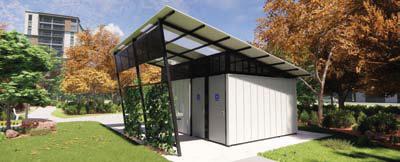Australia’s National Local Government Newspaper



The City of South Perth is ramping up its crime prevention efforts with the recent acquisition of a state-of-the-art mobile CCTV trailer, aimed at enhancing community safety and deterring criminal activity within the local area.
Deployed in strategic partnership with local Kensington Police, the mobile CCTV trailer serves as a proactive measure to address crime ‘hotspots’ identified through collaborative efforts between the city and WA police. To date the trailer has been deployed to Millers Pool carpark in South Perth, Sandon Park in Salter Point, the South Perth Foreshore near the Scented Gardens and Kwel Park playground in Karawara.
The new initiative is bolstered by the installation of ‘Eyes on the Street’ footpath decals at various locations throughout the city. These eye-catching stickers are strategically placed to encourage community members to report suspicious activities to Crime Stoppers WA, using a convenient QR code that directs individuals to the Crime Stoppers WA reporting website.
The rollout of the new CCTV mobile trailer and footpath decals complements the fixed CCTV cameras already in operation throughout the City. With a focus on addressing crime concerns, the City’s proactive approach to increasing CCTV coverage is poised to make a significant impact on reducing anti-social behaviour and criminal activity across all City of South Perth suburbs. City of South Perth Mayor, Greg Milner said: “By strategically deploying surveillance resources in collaboration with local police, we aim to deter criminal behaviour and foster a greater sense of security within our City.”
Queensland homeowners are being slapped with $10,000-a-year flood insurance hikes despite living in towns ringed by flood levee banks that have protected them against floodwater for decades.
Queensland councils are demanding answers from the insurance industry after receiving complaints from residents that bills have soared – in at least one case from $3500 to $13,500 a year.
Murweh Shire Mayor Shaun ‘Zoro’ Radnedge said he feared residents would have no choice but to drop their insurance, meaning they were at risk of losing everything if their homes caught fire or were otherwise damaged or destroyed.
Balonne Shire Mayor Samantha O’Toole said residents in her shire had been hit with 100 per cent price rises year on year on year and soaring insurance bills risked a damaging knock-on
effect for housing availability and affordability.
Mayor Radnedge said he had called insurance companies to ask how they were calculating the soaring premiums only to be told they did not realise Charleville had flood-proofing levee banks.
“We are really asking the question of the insurance companies in Australia why our insurance premiums, especially in the Murweh Shire have risen sometimes up to 500 per cent,” Mayor Radnedge said.
“We are asking why because we have mitigation in place, we have a levee bank in Augathella
and in Charleville but we have seen these huge rises in these places.
“Council and government have put a lot of money into maintaining that mitigation and we’re asking where does the mapping come from that insurance companies are using to make the assessments on these insurance policies.
“We’ve had rises from $3500 to $13,500. We advocated on behalf of that resident and the insurance company came back and said they were not even aware that we have a levee bank in place in Charleville.
“So, my question, and South West
Queensland Regional Organisation of Councils’ question, is where are these insurance companies getting their information from as far as flood mapping goes.
“There’s a huge deficiency all across Australia and we need the insurance companies to be more accountable.
“It’s really scary in that people are choosing not to have insurance.
“They can’t afford it. We are talking sometimes up to $270 a week just to have that insurance.
Even when it’s not flooding it seems we can’t escape floods and natural disasters. My inbox filled with stories on the subject this month including our front page, the Federal Government’s Disaster Ready Funding and the NSW Government introducing faster funding pathways for Northern Rivers communities. It is obviously the big topic for councils and residents alike – the seventh anniversary of the Cyclone Debbie floods on 1 April had people around me talking about their insurance hikes (if they can insure at all now) and the long-term effects of flooding on mental health. Flooding is a fact of life for many communities and it is clear that more is needed. More schemes like the NSW Government’s strategy, more money for disaster planning, more discussion on insurance and more money for mental health in disaster prone areas. It’s obvious that just because it’s not flooding doesn’t mean people aren’t suffering.
Tania Phillips, Editorial CoordinatorCassowary Coast Regional Council has welcomed the region’s first female Mayor Teresa Millwood following the Queensland Local Government elections late last month.
The council has also nominated Nicholas Pervan as Deputy Mayor.
Alongside the declaration of office for Mayor Millwood were new Councillors Peter Reed (Division one) and Ellen Jessop (Division two), as well as returning Councillors Trudy Tschui (Division three), Nicholas Pervan (Division four), Jeff Baines (Division five) and Renee McLeod (Division six).
Mayor Millwood congratulated her fellow Councillors on their appointments and said she’s looking forward to working with Council to deliver priorities for the community.
“We need to get back to essential services and provide value for money so that our community is satisfied that they’re receiving the services they’re paying for,” Mayor Millwood said.
“I’m committed to providing honest and re-

liable representation for the Cassowary Coast and will be available to anyone who wants to discuss their ideas and aspirations for our future.”
Mayor Millwood also expressed her commitment to working collaboratively with her
colleagues to see the collective vision come to fruition in this term of Council.
“A good leader can listen and understand, but a successful leader needs the support of their team and constituents who are willing to listen, and willing to accept change.”
Nineteen high-priority projects will receive a share of more than $45 million as part of regional and rural road and bridge safety upgrades across the country.
From Clarence Valley in New South Wales, Gladstone in Queensland, through to Port Hedland in Western Australia, the Government will partner with local councils to deliver projects in fast-growing communities and in areas that house major production hubs.
More than $25 million will be shared by 14 projects under the Bridges Renewal Program (BRP), with over $20 million supporting five projects under the Heavy Vehicle Safety and Productivity Program (HVSPP).
Minister for Regional Development and Local Government, Kristy McBain MP said it was much-needed work.
“We know that our regional road networks are ageing at the same time as communities outside of our big cities are growing – which is why we’re partnering with local councils to get their high-priority road safety projects off
the ground,” she said.
“Bridges are critical access points in and out of our communities, and freight routes are central to the efficient delivery of essential products and services, which is why this $45 million will go a long way to improving the safety and reliability of these regional road networks.”
The BRP supports upgrading old and worn timber bridges to modern structures that can take more weight, are better equipped for major weather events, and are safer for both vehicles and pedestrians.
The latest BRP projects include: more than $2.7 million to replace Comobella Bridge over Mitchell’s Creek at Comobella outside of Dubbo with a concrete structure, more than $1.8 million towards the reconstruction and widening of Appila Spring Bridge at Appila in South Australia, more $1.6 million to replace the culvert on Almurta Glen Forbes Road at Almurta in Victoria.
The HVSPP supports improvements to
roads used in freight routes, including the installation of intersections, widening roads, sealing roads and installing safety barriers - to increase the productivity and safety of heavy vehicle operations.
The latest HVSPP projects include: $5 million towards the upgrade of two existing causeways and one new causeway at three locations on Malbon-Selwyn Road at Cloncurry in Queensland; $5 million to reconstruct and widen around 6 kilometres of Mount William Road at Yalla-Y-Poora in Victoria; $5 million to upgrade Route one of the Wedgefield road network at Wedgefield in Western Australia, including widening and sealing approximately 580 metres of road, installing precast box culverts to mitigate flooding, and pavement upgrades.
The BRP and HVSPP will consolidate into the Safer Local Road and Infrastructure Program (SLRIP) from 1 July 2024 – with an additional $50 million to be added to the new program.
insurance is $270 a week, and you are charging $350 a week in rent, you are not making anything out of that investment.
“Where do we go to here from here?
“All our communities here in southwest Queensland have levee banks and we need the government to step in here and help us out –where is that flood mapping derived from and where do the insurance companies take that information.”
Mayor O’Toole said towns in her Balonne Shire – including St George, Thallon, Dirranbandi, Bollon and Mungindi – were protected by levees, but insurers were still raising premiums even though none had been flooded.
2024 National General Assembly
2-4 July
National Convention Centre, Canberra
Registrations are now open for the 2024 National General Assembly (NGA) from 2-4 July in Canberra. ALGA are also reminding councils to submit motions for the 30th anniversary NGA, with a theme of Building Community Trust.
“Councils and government are spending a lot of money maintaining these levees, but the insurance premiums aren’t recognising that,” Mayor O’Toole said.
“We have a housing shortage and these premiums could make it worse, as to get a mortgage you need insurance cover.
“If fewer people can afford insurance then we are going to have fewer homes available, which will just exacerbate the housing shortage.”
Councils at last year’s Local Government Association of Queensland (LGAQ) annual conference backed calls for affordable, available flood cover for Queenslanders.
Australian Council of Local Government
5 July
National Convention Centre, Canberra
ALGA is delighted to once again partner with the Federal Government to host the 2024 Australian Council of Local Government (ACLG) in Canberra. The event will be held at the National Convention Centre on Friday 5 July, after the 2024 National General Assembly (NGA). It is expected
“This surge in premiums has resulted in financial hardship for homeowners, as some have been offered unaffordable premiums, whilst others have been denied insurance coverage.
“Councils have invested significantly in flood mitigation projects since 2012, yet the flood insurance costs hinders the effectiveness of these mitigation efforts and poses financial challenges for homeowners and councils alike.
“The LGAQ calls on the State and Federal governments to urgently implement measures to alleviate the financial burdens imposed by unaffordable flood insurance premiums.”
“There has been a dramatic rise in the cost of flood insurance premiums faced by Queensland homeowners in the wake of recent natural disasters,” LGAQ chief executive officer Alison Smith said.
to attract around 600 local government representatives,as well as a range of peak body representatives.
2024 NSW Local Government elections
14 September
The NSW Electoral Commission will be conducting the elections for 126 councils on Saturday, 14 September 2024 for the election of Councillors. Some councils will also be holding mayoral elections, constitutional referendums and/or polls.
The long overdue parliamentary inquiry into local government sustainability is good news for the sector, its workers and the communities who rely on this critical level of government according to the two Federal ministers with the Local Government portfolio.
The Standing Committee on Regional Development, Infrastructure and Transport has accepted the Government’s referral, which comes more than two decades after the last such Parliamentary Inquiry into the sector’s financial capacity.
Federal Minister for Infrastructure, Transport, Regional Development and Local Government Minister Catherine King said it would provide an opportunity for all perspectives on issues including worker security, financial sustainability and cost shifting to be heard.
“I thank the Committee for accepting my referral and starting the important task of working with stakeholders to understand the pressing issues facing local government,” she said.
“Local councils deliver the essential services our communities rely on. That’s why the Australian Government is committed to partnering with local government through programs like Financial Assistance Grants, Roads to Recovery, the Safer Local Roads and Infrastructure Program and the Black Spot Program.”
The Federal Government encourages all interested groups to have their say on these issues by providing a written submission by 3 May 2024.
Minister for Regional Development, Local Government and Territories Kristie McBain said the Committee would also be travelling around Australia to understand the unique issues faced by urban, regional and remote local governments.
“From day one we’ve brought local government back to the table as a trusted delivery partner of the services our communities rely

on, which is why it’s important that future funding arrangements and program delivery meet the unique needs of the sector,” the minister said.
“I welcome this inquiry, which will build
on the extensive feedback we’ve received from the local government sector over the last 18-months, and help inform how we can strengthen their capacity to deliver better outcomes in our communities.”
The Victorian Government has announced Steven Kingshott as the new Chairperson of the Victorian Local Government Grants Commission (VLGGC).
Mr Kingshott has extensive experience across the corporate, public and local government sectors. He will serve as VLGGC Chair from 1 April 2024 to 31 October 2027, following an open and competitive recruitment process.
Local Government Minister Melissa Horne welcomed Mr Kingshott’s appointment.
“The Commission plays an important role in supporting local councils to deliver on the unique needs of their communities,” the minister said.
“Mr Kingshott brings the skills and experience the Commission requires to consider the needs of local councils and the communities they serve – I look forward to working with him.”
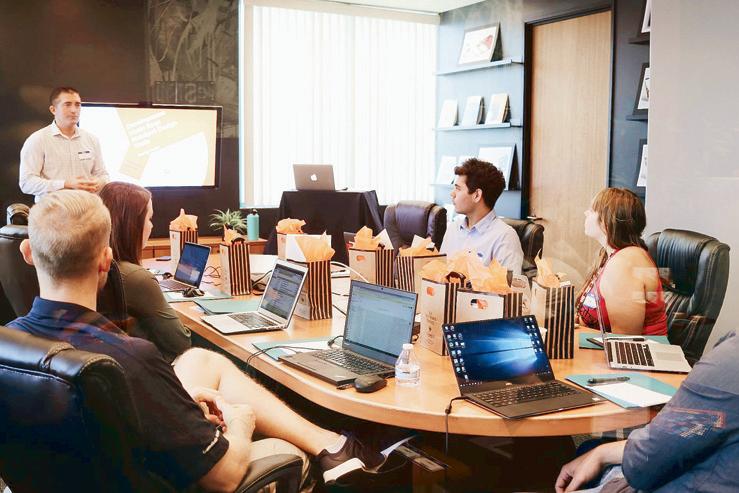
The VLGGC is a three-member, independent statutory body that prepares recommendations to the Australian Government on the
distribution of financial assistance grants for Victoria’s councils.
The grants support the state’s 79 councils to deliver vital services to their communities based on their local priorities, ranging from recreation and culture to community services and maintenance of local roads.
For the 2023-24 financial year, the VLGGC recommended the allocation of more than $747 million in financial assistance grants, with $550 million for general purpose grants and $197 million for local roads grants.
For more information about the VLGGC and financial assistance grants for local government, visit localgovernment.vic.gov.au
Major digital investors gathered in Darwin in late March to discuss opportunities for investment and collaboration in the Northern Territory.
The digital sector is expected to contribute an addition $1-2 billion to the Territory economy over the next decade.
This will be achieved through increased automation and process improvements within Territory businesses, as well as new industries entering the Territory, such as large data centres and associated companies servicing the sector.
Investment Territory hosted the NT Digital Investor Roundtable from 25 – 26 March, following a similar event held in October 2022, which sparked the acceleration of multiple digital infrastructure projects.
Attendees included senior representatives from Telstra Infra Co, BW Digital, Vocus, Inligo Networks and DCI Data Centres.
Chief Minister Eva Lawler said the two-day event brought industry leaders together in the Territory to reinforce their positioning as Australia’s next strategic digital hub, and to facilitate collaborations between major digital investors to help grow the local economy.
“Darwin is located within 50 milliseconds to more than 500 million people and offers a secure and stable location for digital, data, technology and telecommunication companies to start-up, relocate or expand their operations to service the local, Australian and Indo Pacific markets. This is why the Territory Labor Government is investing in this industry, and why we held this Digital Roundtable,” the Chief Minister said.
“The Unite Cable System is a planned terrestrial cable, linking Inligo’s Asia Connect Cable System in Darwin with Adelaide, and later to Melbourne. It will then connect onto Inligo’s ACC-1 subsea cable.
“The new system will provide an alternate, low latency, high capacity transmission service path between customers in Australia, with connections into South East Asia and the Indo Pacific.”
Queensland’s Immediate Housing Relief for Families program has been expanded to include anyone at risk of homelessness.
Housing and Local Government Minister
Meaghan Scanlon said the Government is ensuring all people who need support can access safe, emergency accommodation – expanding millions of dollars of emergency family accommodation funding to all Queenslanders.
She said the program provides funding directly for emergency accommodation.
“Everyone deserves the safety and security of a roof over their head – our Homes for Queenslanders plan is delivering record investment to make that a reality,” she said.
“Homes for Queenslanders will deliver thousands and thousands of new social housing homes across our state.
“We’re also delivering upfront support for people right now, including funding for emer-
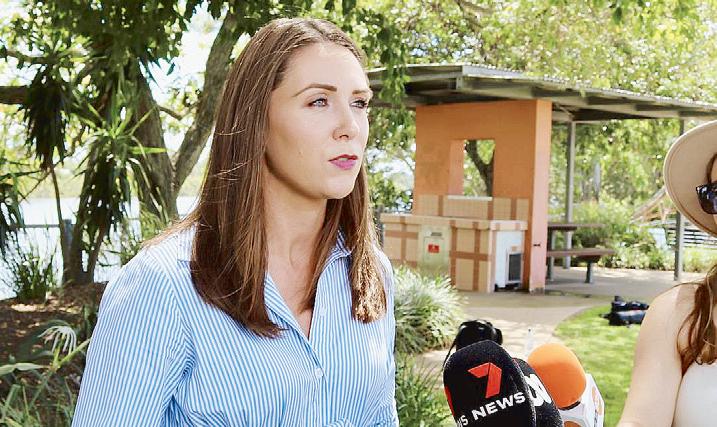
gency accommodation and direct cost of living relief for renters, while we get on with our Big Build.”
The extra support comes as new social housing data shows 1770 households have been allocated social housing to date in the 2023/2024 financial year.
The report shows social housing demand has continued to stabilise in the past 90 days, as applications reduced by 371 applications from 25,362 to 24,991.
The register shows the government has helped more people into social housing in the last quarter, with 924 households allocated housing, topping the 848 in the September data.
The highest demand for social housing continues to come from single person households or couples.
The Government has also moved to provide larger homes to the social housing port-
folio to support housing applications from larger households.
“Many households on the register have already been assisted with other solutions such as bond loans and rental grants. This means the person or family may have been helped to secure a home in the private rental market but remain on the register,” the minister said.
“In the last quarter we have increased rental support to $11.8 million while also setting up dedicated rent relief package under our Homes for Queenslanders plan.”
The Housing Register is a point-in-time register of social housing applications.
The government actively works with all households on the register to meet their immediate housing needs.
The Federal Government’s Disaster Ready Fund (DRF) is heavily oversubscribed and needs to be increased by at least $250 million per year to better protect Australian communities from future natural disasters, according to the country’s peak local government body.
More than 300 applications seeking $460 million were submitted in the first round of the DRF in 2023, with 187 of these projects successfully funded, including 100 by councils.
ALGA President Councillor Linda Scott said while councils have welcomed the $200 million DRF, which was secured through local government advocacy, the latest figures show it’s vastly insufficient given the number of potential mitigation projects across the country.
“Our communities have been repeatedly hit by floods, fires and cyclones over the past two years, with more than 60 per cent of local government areas affected,” Cr Scott said.
“We have to better prepare for the increasingly frequent and more severe natural disasters we are experiencing, and local government is calling for an extra $250 million of federal investment in disaster mitigation.”
In 2021, Deloitte Access Economics estimated natural disasters cost Australia $38 billion per year, and this amount is expected to rise to $73 billion per year by 2060, assuming
a low-emissions scenario.
Cr Scott said investing in mitigation makes economic sense and significantly reduces the costs governments incur during the recovery process.
“We know for every additional dollar spent on mitigating the effects of climate-related natural disasters, it saves the government up to $8 in the long term, according to DFAT analysis,” Cr Scott said.
“Given these large-scale mitigation projects can cost tens of millions of dollars to plan and deliver, Australia needs to significantly increase its investment in emergency preparedness.
“For example, the Bundaberg East flood levee – proposed by Bundaberg Regional Council and funded by the Federal and Queensland Governments – will cost around $175 million alone.
“As a nation, we urgently need to boost our investment in disaster mitigation to protect our homes and communities, and save lives.”

The NSW Country Mayors Association (CMA) has welcomed the NSW Government’s announcement of a new Inquiry into Community Safety in Regional and Rural Communities and urges community members to have their say.
The CMA’s call for an inquiry came to address the dangerous increase in crime in regional and rural areas across the state.
CMA Chair and Gunnedah Mayor Jamie Chaffey said the statistics showed clearly there were disproportionate crime levels and fewer police resources in regional and rural New South Wales, and it was now up to community members to bring the full extent of the crisis to the attention of the State Government.
“It has been an enormous challenge to make this Inquiry a reality,” Mayor Chaffey said.
“This is a great first step and now that we have the attention of our Members of Parliament, it is up to us all to make sure that we are sharing our lived experience and any suggestions we have about how to stop the severity and instances of crime.
“We also need to make it clear that there is a real need for adequate support for both victims and perpetrators that will lead to a safer community. We need to share the importance of pro-active policing, a change that can only happen with an increase in police numbers.
“We also need to provide any other information that you feel our elected Members of Parliament need to understand when they are making decisions that will affect our confidence in our own safety.
“Whether you have been impacted by
crime, know someone who has, whether you work or have previously worked in related services, or come from another state or country that has implemented great working strategies, you need to make your voice heard.”
The CMA’s recent general meeting hosted top level speakers on regional crime at NSW Parliament House days after the announcement.
“Our six-month campaign paid off and the NSW Government announced the Parliamentary Inquiry into Community Safety in Regional and Rural Communities,” Mayor Chaffey said.
“Our meeting saw presentations from the NSW Minister for Police, the Shadow Minister for Police, the Deputy Police Commissioner and President-Elect of the NSW Police Association.
“I accepted the praise we received from most of our special guests on behalf of our members for our regional NSW crime campaign as vindication for the important role of the Country Mayors Association of NSW – and the important issue of regional crime.
“The inquiry that the NSW Government has announced is not everything we hoped for, but the Minns Government has listened and responded, which the CMA commends.
“As Shadow Police Minister the Hon Paul Toole told our meeting, this inquiry must get to the front lines of the regional crime battle
and not remain safely holed up in Sydney. We encourage regional Councils to send submissions to the Inquiry members, including Mr Toole, asking that the inquiry conduct a hearing in their town and hear from locals in person.”
The meeting in Sydney included a presentation by Executive Director NSW Bureau of Crime Statistics and Research, Jacki Fitzgerald.
CMA Deputy Chair and Temora Mayor Rick Firman AOM said the bureau’s data underpins the CMA’s recently updated Regional NSW Crime, Law and Order Report.
“The statistics and trends speak for themselves,” Mayor Firman said.
“As Jacki Fitzgerald told our meeting, the data shows that regional NSW has far worse reported crime figures than Sydney.
“What we need is for policy makers and Government departments to get more than the numbers, to really understand what crime has done to people in our regions and what consequences or potential solutions are, when we do not feel safe in our own communities and our own homes.”
The CMA’s current Crime, Law and Order Report is online on it’s NSW Country Mayors website.
The submissions deadline for ‘Community Safety in Regional and Rural Communities’ is 31 May.
The West Australian Planning Minister’s recent announcement that compatibility requirements for granny flats will be removed is a short-sighted decision that will have a long-term impact on local communities according to WALGA.
Speaking after the Local Government webinar on the new residential design codes hosted by the group, WALGA President Karen Chappel said that while Local Government supports sensible planning reform and efforts to increase housing supply and diversity, the ongoing watering down and erosion by the State Government of the role of Local Government in planning and approvals, often with little or no consultation with the Local Government sector or the community, will have long-term negative impacts.
“We all want to see more housing, but this
decision, made without consultation or any demonstrable evidence that it will, in fact, make a significant difference to the current housing shortage, means open slather on poorly designed housing solutions,” she said.
“I really don’t think the community wants to see dongas and sea containers in our front or backyards.”
WALGA maintains that Local Governments are best placed to work with residents and developers to achieve long-term housing outcomes at the local level.
“Local Government supports planning re-
A new House of Representatives Standing Committee inquiry into local government sustainability has been welcomed by the Australian Local Government Association (ALGA).
With additional responsibilities costing billions of dollars being forced onto Australia’s 537 councils every year, ALGA expects this national inquiry will consider and address the financial challenges and funding shortfalls being faced by local governments.
ALGA President Councillor Linda Scott said: “Councils are constantly being asked to do more – by their communities and state and territory governments – but aren’t being funded to deliver on these responsibilities.”
“ALGA’s research shows that over the past decade local government expenditure per capita has flatlined, while spending by other governments has continued to rise,” Cr Scott said.
“It’s encouraging that the changing infrastructure and service delivery obligations of local government have been recognised and included in the inquiry’s terms of reference.
“By providing a wide range of free and low-cost services, we are delivering real cost of living relief in our local communities, but need more sustainable funding.
“ALGA looks forward to presenting to the inquiry on the challenges Australian local governments are facing, and how we can work collaboratively to set councils and our communities up for success.”
Recent reports from the Local Government Association of Queensland and Local Government NSW have highlighted the alarming impact of cost shifting in these jurisdictions.
“New research from Queensland and New South Wales confirms a concerning trend of cost shifting to councils that we are seeing right across the country,” Cr Scott said.
Cr Scott said a key consideration for the inquiry would be the importance and effectiveness of untied federal funding to councils through federal Financial Assistance Grants.
“Over the past 30 years, we have seen Financial Assistance Grants to councils slip from one per cent of Commonwealth taxation revenue to just half a per cent,” she said.
“Regional and rural councils have been hit the hardest, and for many of these councils Financial Assistance Grants make up more than 20 per cent of their annual operating expenditure.
form and changes to the medium density code that delivers better quality development and greater diversity of housing stock. But this should not come at the expense of good design outcomes and community amenity.”
WALGA emphasises the need for balanced decision-making that prioritises both housing supply and community well-being.
“While short-term policy changes may benefit developers and the commercial sector, WALGA remains committed to ensuring that residents can live in properly planned communities both now and in the future.”
“We are committed to partnering with the Commonwealth, and our state and territory governments, to facilitate more affordable housing, better prepare for natural disasters, and deliver on our national emissions targets, but we can’t do this without funding support.”
Cr Scott said it was also encouraging to see the terms of reference for the inquiry include workforce challenges, with ALGA’s research showing nine out of every 10 councils are experiencing jobs and skills shortages.
Moira Were AM, Mayor, of the City of Onkaparinga, South Australia was kind enough to sit down and answer our questions this month.
Tell us about your area: what makes your council special or different?
Mayor Were: City of Onkaparinga is SA’s most populated council, representing 10 per cent of the state. This is the place of Kaurna people, who have cared for country for millennia. Our name is derived from a Kaurna word meaning ‘women’s river place’. One of our borders is the 31km of coastline we share with Gulf St Vincent, so life-giving watery spaces are a big part of this city’s past, present and future.
We have an internationally renowned pristine wine region, a mix of suburban and rural living options, historic townships, and natural bushland and hinterland. It’s an amazing place for the 180,000-plus people who call this vibrant city home.
The council is made up of six wards, each represented by two elected members plus a mayor. The workforce spans five organisational divisions, with more than 800 staff covering a wide range of professions from planners and librarians, through to rangers and truck drivers. Programs and services are delivered from a variety of facilities, supported by over 500 dedicated volunteers.
Do you have a favourite part / aspect / attraction in the council area?
Mayor Were: We’re spoilt for choice and I find myself in different locations to meet my spirit, such as a walk through one of our ancient gorges to reconnect with the past, a play on the beach with my grandsons for some family time, or telling stories with toddlers and pre-schoolers in one of our six libraries, which is always fun and life-giving. However, what I love most is seeing so many families out and about enjoying our events in public places such as Beach Road at Christies Beach or Trucks on Tour in one of our three regional play spaces.
How long have you been on Council and why did you become involved in Local Government?
Mayor Were: I was elected as mayor in November 2022. I hadn’t been a councillor previously. I have lived in Onkaparinga for more
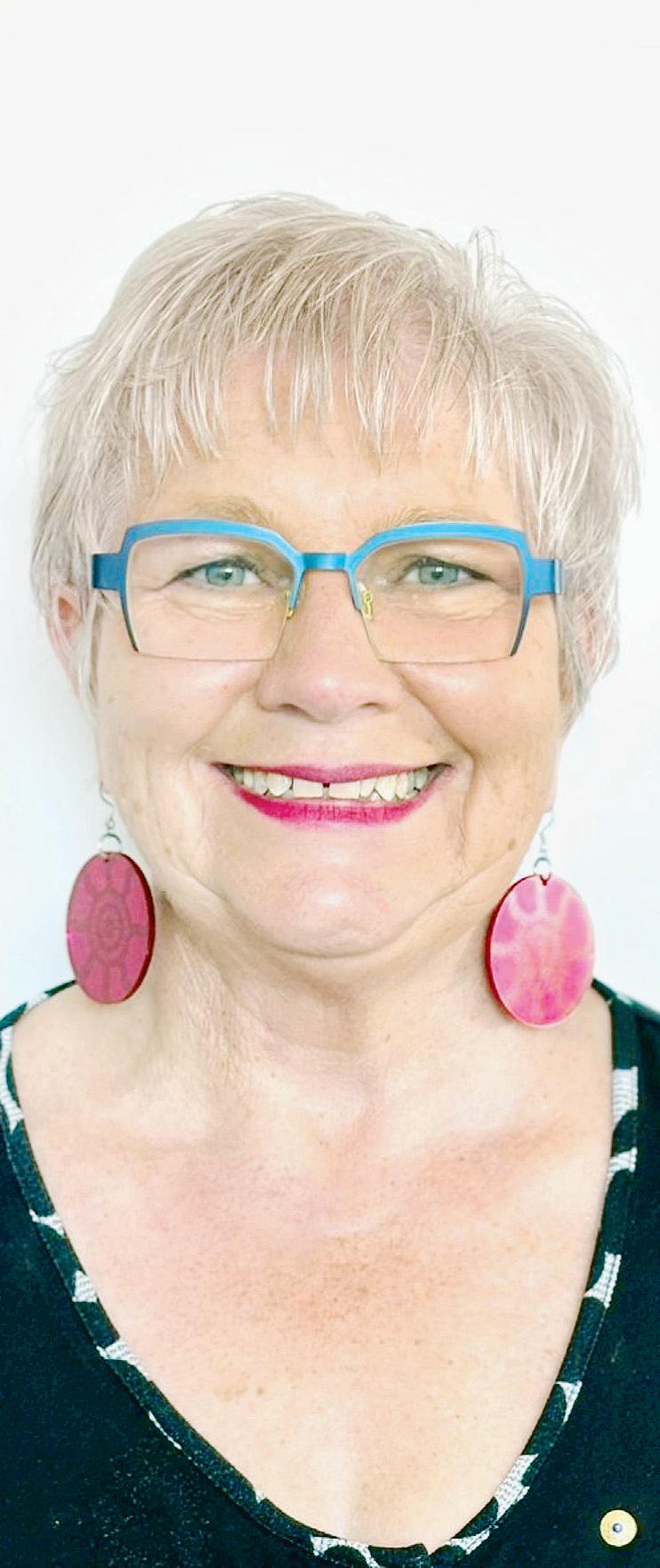
than 30 years and decided I wanted to make a leadership contribution in public service, and so decided to stand for election. Several people encouraged me to run, it wasn’t some-
thing I’d considered. However, once I looked closely at the role, my skills, networks and experience, I could see I might be able to make a contribution to the place I call home. Having worked in statewide, national and international contexts, it feels very good to bring that harvest home to the people and places that have been so good to me. Do you have another job? Tell us about that and how it contributes to your role/views as a councillor.
Mayor Were: I have other roles including being a very part-time director of a social enterprise intermediary, Collab4Good; volunteering as chair of the SA Impact Investment Network and curating an online community focussing on closing the gender investment gap; and I’m a trustee of a philanthropic foundation. These roles connect me to bigger-picture thinkers, community leaders, investors and changemakers, which helps brings those perspectives to my role as mayor. This blend of social and economic relationships helps me balance competing priorities in budget conversations, and strategic thinking for long-term financial and community outcomes.
What activities do enjoy outside of work hours?
Mayor Were: You’ll find me most Wednesday nights singing in the altos in a community choir. I love listening to podcasts like Leading or the Rest is Politics, books on Audible, writing my weekly blog or planning for a future trip. I love poetry and art for inspiration where I find the creatives are able to say things in ways that will help me see something new or help me gain an insight that was previously hidden from me.
What are they key challenges facing you and your Council?
Mayor Were: We’re facing the challenges of balancing the books and preparing ourselves for the future. After seven years of deficit operating budgets, it’s time to get back into the black. Like the rest of the world, we’re working to inoculate our community from the impact of climate change. We’re very fortunate to have a highly skilled team on staff and in our partner-
ships where this work – particularly with our coastline – is setting us up for what’s ahead with rising sea levels, changes to dune movement, and sea temperature.
What innovative projects or policies is Council working on?
Mayor Were: The innovation that gives me the most buzz is the Southern Region Waste Resource Authority (SRWRA) – a regional subsidiary established by the Onkaparinga, Marion and Holdfast Bay councils and involving joint venture partners. Recently showcased on ABC’s War on Waste, SRWRA’s world-class integrated waste and recycling facility includes SA’s largest and most technically advanced materials recovery facility, which processes the yellow-bin recyclables of more than 360,000 households across Southern Adelaide, the Fleurieu Peninsula and Kangaroo Island. SRWRA is also home to a world-class renewable energy facility, which combines bioenergy and solar technologies to deliver reliable renewable electricity for the southern households.
What is the best part about being a Councillor?
Mayor Were: Best part of being a councillor is being able to work at scale and to bring the individual experience of a resident to a big strategic decision.
What is the worst part?
Mayor Were: The worst part is not getting to vote or debate in the chamber when an issue that’s close to my heart is being considered.
Under SA’s Local Government Act, the mayor is the presiding member, gets a casting vote when required and does not debate.
What do you hope to accomplish in the future?
Mayor Were: I hope I’ll lead in a way that enables and facilitates all the voices of our community to be heard, not just the loudest ones, when we come to make decisions for today and for the future. I hope orientating our decisions for future generations is a legacy of a bigger canopy, a world-class destination for tourists, and an equitable place for families to raise their children.
LG: Tell us about your area: what makes your council special or different?
Mayor Curran: Griffith is such a diverse and multi-cultural community, with a thriving agricultural industry, amazing food, strong community bonds, cultural richness, natural beauty and unique history. Together, these elements contribute to making Griffith a special place for those who call it home. More than 70 nationalities add to our cultural tapestry including Italian, Indian, Afghani and Pacific Communities. There is plenty to love about the Griffith Local Government Area and we love to welcome visitors to see what we have to offer.
LG: Do you have a favourite part /aspect/attraction in the council area?
Mayor Curran: Life in Griffith centres around hard work, food, wine, sports, and family. The annual festivals are a great time to visit, showcasing our local produce, top-notch wines, friendly people, and diverse cultures. The entrepreneurial spirit is very strong in Griffith which leads to many job opportunities across many businesses and sectors.
LG: How long have you been on Council and why did you become involved in Local Government?
Mayor Curran: I have called Griffith home for 30 years this year and am in my 16th year as a Griffith City Councillor. I was popularly elected as Mayor in 2021. When I started on council I wanted to give back to the community. I looked for some alternatives and being a part of Council ticked a lot of boxes. Through 15 years of involvement in council, I became interested in leading this dynamic council which has been a huge honour and I hope to do it for a little longer yet.
LG: Do you have another job? Tell us about that and how it contributes to your role/views as a councillor. What activities do enjoy outside of work hours?
Mayor Curran: I am Operations Manager for a multi-national supply chain business based in Griffith, we supply many of the largest businesses in Griffith with our wide variety of products. Our day-to-day business is heavily reliant upon production as is the community in which I am the Mayor, so both aspects of the work I do require the water that we desperately need to ensure viability into the future.
LG: What are they key challenges facing you and your Council?
Mayor Curran: I’m dedicated to leading Griffith into the future, driving development and jobs growth, looking at ways to improve housing and liveability, and creating a safe and welcoming space for the community. As with most Councils, financial sustainability will continue to be a priority, a key focus will be on shaping strategies to increase utilisation of existing infrastructure as well as working on bringing new amenities.
LG: What innovative projects or policies is Council working on?
Mayor Curran: The Griffin Green Affordable Housing project represents a partnership between Griffith City Council and Argyle Housing. The ground-breaking collaboration addresses Griffith’s housing shortage by creating 20 medium-density affordable units and 42 buildready housing lots. This is an exciting project that its garnering national interest and should make a considerable difference to Griffith.
LG: Tell us about a specific success you have
had in Local Government.
Mayor Curran: Being a popularly elected Mayor of such a dynamic community is something I never imagined would happen. I have worked with two mayors during my time on Council, both gentlemen I respect greatly and never thought I would be able to do what they were doing, I try to make them and our community proud at all times as Mayor.
LG: What is the best part about being a Councillor?
Mayor Curran: I love the opportunity to be a part of the decision-making team for the future of Griffith. I get the opportunity to advocate for our community and to try and influence ministers of both State and Federal Government to get the best outcomes for our community. I thoroughly enjoy it and would encourage others to do likewise in our community.
LG: What is the worst part?
Mayor Curran: I think social media must be one of the worst parts, people will say something on social media they would never say to your face. I am fairly thick-skinned, but I have seen it really negatively affect some people and it gives power to people that don’t necessarily use it for good.
LG: What do you hope to accomplish in the future?
Mayor Curran: Financial sustainability for council while still helping Griffith grow will be a challenge. What’s also important to me is water security. We will work with the state and federal government to look at long- and medium-term actions around the restoring our rivers bill. Of course, housing availably will remain a major priority too.

Tourism is so important to many regional communities. In this context, nostalgia tourism has long been an economic driver in Europe, and now it’s taking off in Australia. This month we examine some under-appreciated possibilities.
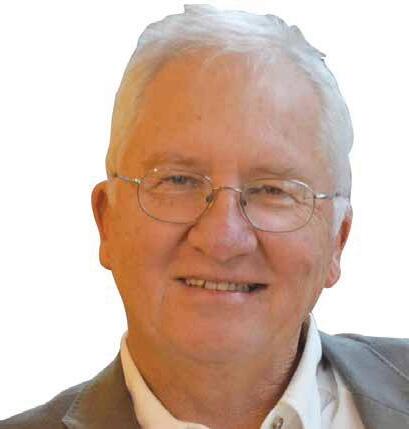
Echuca
Thirty years ago the Echuca Wharf comprised a motley collection of disconnected activities paying homage to the past. But thanks to local leadership and perseverance, it’s now a standout tourism cluster - the original wharf, a museum, historic buildings, hotels, restaurants, equipment displays, paddlesteamer cruises, horse-drawn carriages and blacksmiths, etc.
Various tranches of federal, state and local council money have underpinned the development. Indeed the Discovery Centre and a wharf upgrade was made possible via grants of some $12.6 million. As usual, there are the knockers who question its value, but I’m advised that changes to governance and operating systems are in train to manage the precinct’s recurrent expenses. These sorts of concerns are of course everyday issues to councils responsible for similar projects across the nation, especially when events like Covid pandemics, airlines strikes, floods, fires, petrol price surges, etc., can blow a massive hole in tourism patronage.
But let’s consider the wider economic and social benefits of such projects. The international economic development literature is replete with advice about why regional communities must think about their unique value proposition (USP), to understand their competitive advantages as a place to generate wealth and jobs, and to develop initiatives to deliver the wider benefits.
To explain, the Murray River’s past and present role in delivering agricultural wealth is the USP of many communities in the region. And the Echuca Wharf precinct is a direct and practical initiative consistent with that. The problem is that the wider benefits of this precinct are not fully appreciated. One of its benefits lies in building the Echuca brand and in generating community confidence. Another benefit lies in enticing tourists - out of Melbourne in particular - to visit and inject expenditure into the community as well as other communities along the Murray Valley.
I believe that such precincts are under-ap-

preciated because they’re work-in-progress. Why? In the case of the Echuca Wharf precinct, there are undoubted opportunities for more businesses and government agencies to locate there to capture the commercial synergies. But it’s a slow process. Moreover the evolution of the ‘commercial mindset’ takes time. An example of this is the food offering. I spent some time, to no avail, searching for Murray Cod on the menus of Echuca restaurants. My logic was that tourists driving from Melbourne or indeed Canberra do not want to eat awful NZ Hoki – they expect to eat local produce i.e. the same Murray Cod as served up in the capital cities. A further example is the absence of a local food emporium, where tourists can stock up on some of the great meat, fruit and vegetables from the surrounding farms. The Barossa and Noosa economies are precedents in this regard.
Nyah West
This town deserves a place in Australian sporting and social history. How so?
Well, Nyah West (pop. 700) is about two hours drive down the Murray Valley highway from Echuca. Like much of the Mallee and Wimmera, it has de-populated since the soldier settlement programs following the world wars.
In this case, it’s the hometown of Bob Rose (1928-2003), a true legend of the Collingwood Football Club, and Aussie Rules football in general. His upbringing was in a small fibro cement house with six siblings, parents, grandmother and uncle. He grew and sold vegetables and had a job clearing irrigation channels. He starred for the local footy team and had boxing matches at the Grand Hotel in Nyah West. It was probably quite grand in those days, and hopefully still is.
He was recruited by Collingwood at the age of 17, and the rest is history. He was a tough and skilful player, and later coach. His unfortunate legacy is that he coached Collingwood to three Grand Final losses (1964, 1966, 1970) by an aggregate of 15 points. Collingwood supporters still have nightmares about this. But it was his quiet dignity in accepting these losses, plus his devotion to Collingwood and his quadriplegic son Robert (Collingwood player, Victorian cricketer) in following years that seared his name into the memories of the Collingwood faithful.
Collingwood FC has a huge supporter base. Indeed, it prides itself on the working class origins, and its connection to hardworking folk across the nation. And Bob Rose was the epitome of that.
Fast forward to 2024 and there are literally
hundreds of thousands of Collingwood fans sitting in suburban loungerooms who’d relish a weekend visit to Nyah West - to honour the Collingwood legend, to watch the sun set across the thirsty paddocks, to walk the Nyah West oval and then retire to the Grand Hotel to imagine Bob Rose boxing in a makeshift boxing ring. Then roast lamb with trimmings, watching a highlights reel of Collingwood’s greatest and lowest moments. Yes, those Grand Final losses probably have a mollifying effect on Collingwood tragics.
The obvious place for honouring the Bob Rose nostalgia is indeed the Grand Hotel - it’s where the local folk meet. No need to finance a new building. I’m currently discussing possibilities with the publican.
Other possibilities
Castlemaine and Guilford (between Ballarat and Bendigo) are where the late Ron Barassi, another AFL legend, spent his formative years. Barassi was a force of nature and left an indelible mark on Melbourne FC supporters. He initiated the links to Gaelic football and got involved in so many community agendas.
Roma (350km west of Toowoomba) is another town with fascinating nostalgia tourism potential. It’s where Artie Beetson (19452011), the hugely popular and skilful NRL prop forward grew up in modest circumstances –his mum was a member of the Stolen Generation. Artie’s physique was sculpted by a large intake of meatpies. He was also reputed to have eaten eleven hotdogs in a single sitting. Imagine a Roma pub with an Artie Beetson Hotdog as an entree followed by a Roma steak, while watching Artie’s career highlights. I can’t wait.
Meanwhile, Whyalla is the hometown of South Australia’s best ever AFL player, Barrie Robran. And Latrobe (northern Tasmania) is where Darrel Baldock developed his amazing ball skills. These towns have pubs that might usefully rub the nostalgia genie.
Nostalgia tourism extends of course to other pursuits like the arts. For example, June Bronhill (Broken Hill) and Nick Cave (Warracknabeal-Wangaratta) are honoured locally, but there’s still considerable potential to drive your tourism numbers if you can align the product.
Each of the above possibilities could arguably be advanced with a modest grant to access the relevant video footage, develop a compelling story to draw footy supporters to the town, and to devise a marketing strategy. Please email us if you’d like to explore the opportunities.
Rod Brown is a Canberra-based lobbyist specialising in industry/regional development. Email apdcockatoo@iprimus.com.au
It was just another workday for City of Canterbury Bankstown Parking Officers Carlene and Fred, when they spotted what appeared to be a man’s head in bushes at Bass Hill.
The pair sprang into action and rushed down an embankment next to a clinic on Hector Street, where they found 76-year-old Bob Patton, semi-conscious and motionless.
It turns out the Bass Hill local was having a stroke and his condition was deteriorating rapidly.
Carlene quickly called 000, while Fred was able to manoeuvre Mr Patton and put him into the recovery position. Both officers then performed a stroke assessment while on the phone with ambulance operators.
They also alerted Mr Patton’s family and waited with him until the paramedics arrived and transported him to hospital.
Paramedics told Carlene and Fred that they found Mr Patton just in time, and if left without any treatment longer, a blood clot in his brain could have left him paralysed.
Mr Patton, who has been a Bass Hill resident for 49 years, is now recovering at Bankstown Hospital, and while he is still a little
weak, he is feeling much better.
He said he was on his way to the local RSL for “a couple of beers” before he blacked out and fell.
While he doesn’t remember too much of what happened, he recalls Fred and someone else [Carlene] coming to his assistance and is very grateful for their efforts.
“I’m very thankful for their help as I got to hospital in time,” Mr Patton said.
“The earlier you get there, the better your chances of recovery are.”
Canterbury-Bankstown Mayor Bilal ElHayek, who visited Mr Patton in hospital with the Parking Officers, applauded Carlene and Fred for their quick thinking.
“We’re so happy to see Bob healthy and with a smile on his face,” Mayor El-Hayek said.
“Our parking officers have a tough job, but they really are out here with the community’s best interests at heart.”
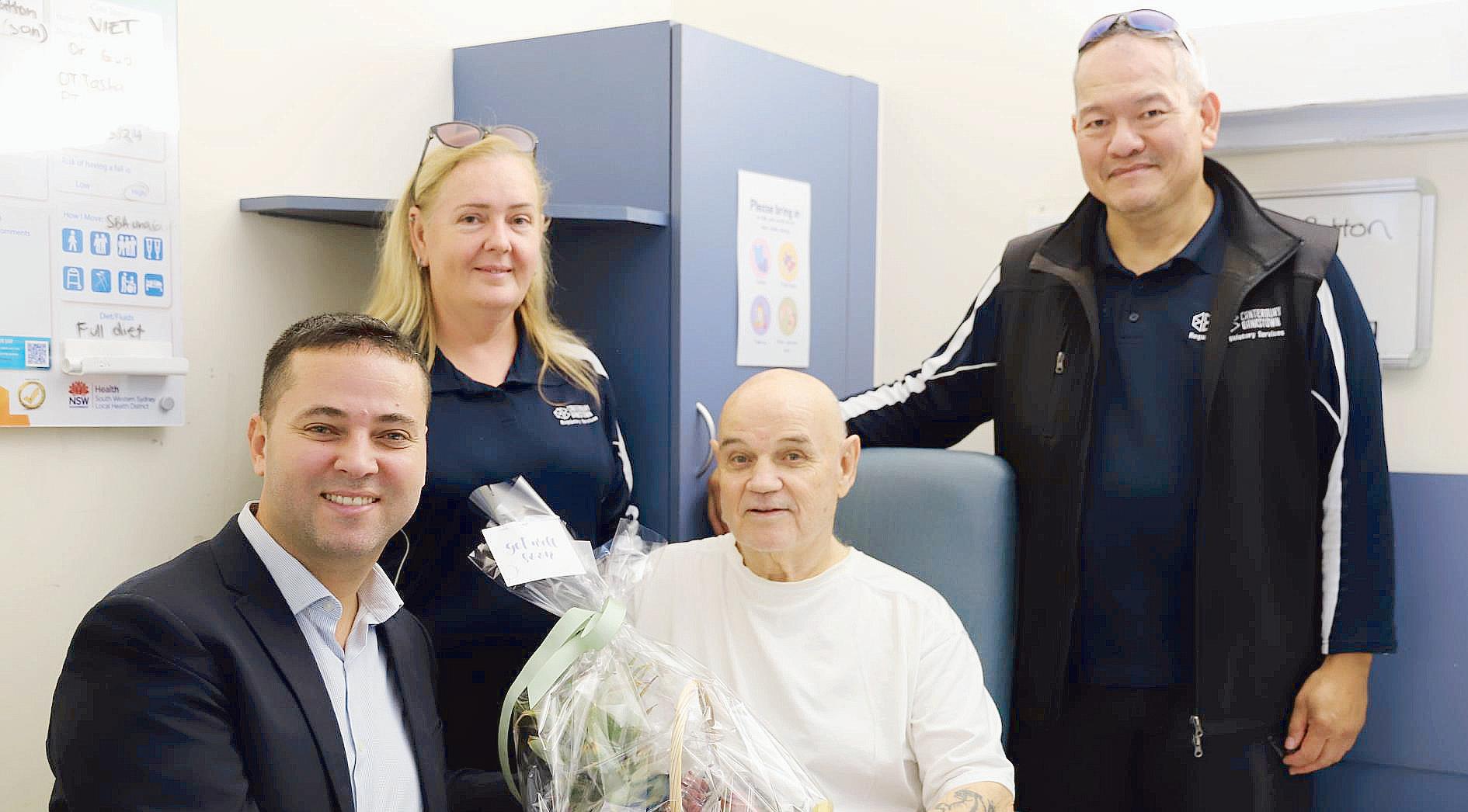
Councils in the Northern Rivers of NSW should have faster access to funding aimed at making it easier to rebuild vital roads and infrastructure after natural disasters thanks to an agreement signed in March.
The Tripartite Agreement between the NSW Reconstruction Authority, Transport for NSW and seven local councils will ensure a speedier roll out of reconstruction funds after floods, fires or other natural disasters and has been welcomed by the Lismore City Mayor Steve Kreig.
“This is the most significant day in the rebuild and recovery of the Lismore LGA. It’s taken 18 months to get here but now this agreement is signed, all residents of the Northern Rivers should see significant progress toward flood restoration works being completed,” the Mayor said.
“Thank you to the NSW Government and all stakeholders for getting this across the line, it’s been a mammoth effort and will give a real boost to the recovery of our impacted communities.”
NSW Premier Chris Minns said prior to this agreement, councils had to finance the rebuilding of infrastructure before they could access additional funding from government.
He said now, councils can access critical funds upfront at each stage of reconstruction, easing financial burdens and making it easier to undertake reconstruction work more quickly.
“What we are doing through this agreement is providing certainty that these councils will receive the money when they need it,” the premier said.
“The agreement will accelerate reconstruction works and allow funds to flow quicker for future events.”
The councils taking part are Ballina Shire Council, Byron Shire Council, Clarence Valley Council, Kyogle Council, Lismore City Council, Richmond Valley Council and Tweed Shire Council.
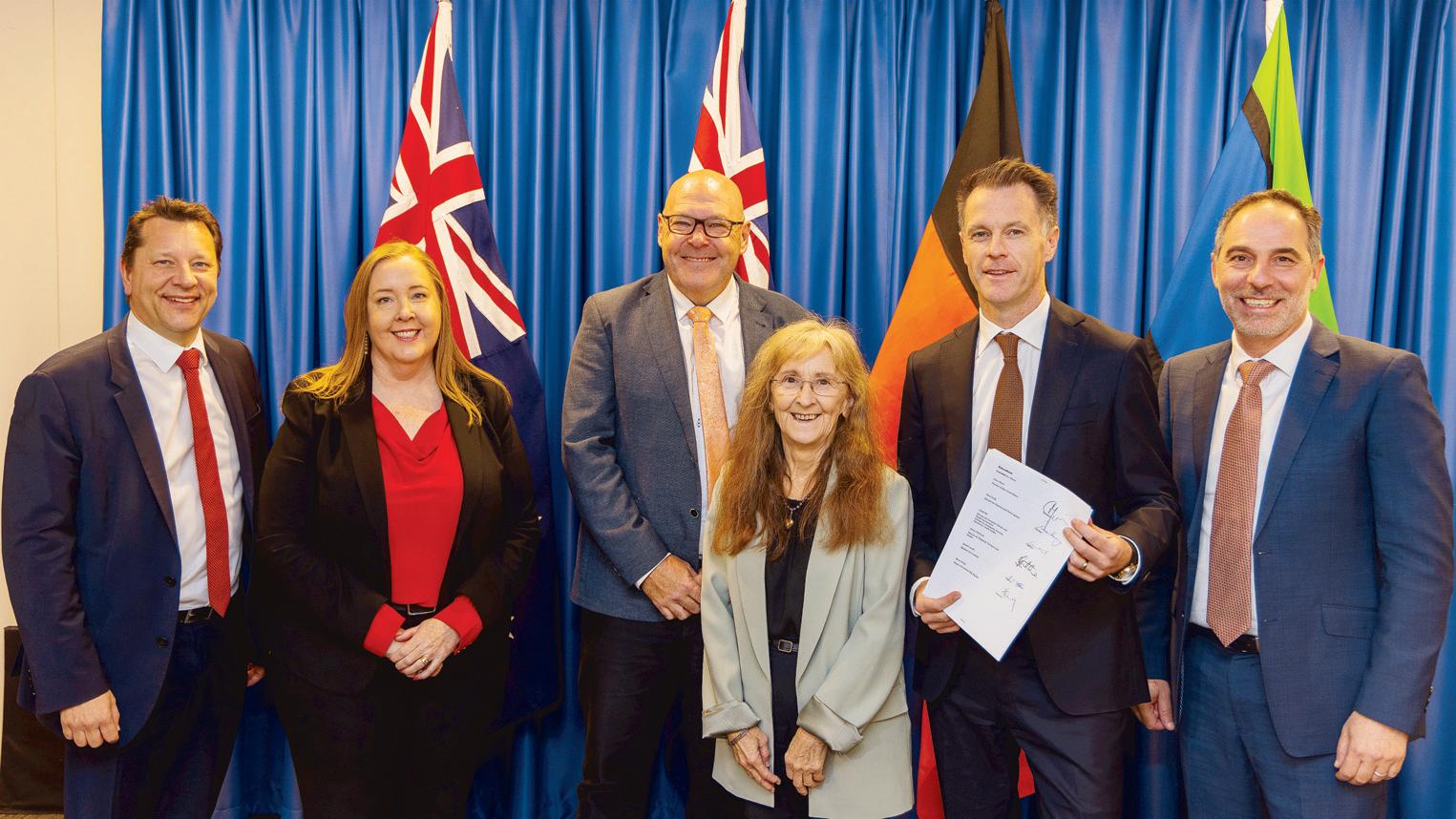
The NSW Reconstruction Authority and Transport for NSW are now developing supporting documentation, administrative arrangements and some initial training to implement the agreement with the councils.
Minister for Planning and Public Spaces Paul Scully said the agreement is aimed at a faster recovery.
“This agreement will help communities recover faster by giving councils access to the funds they need to get vital recovery work underway,” he said.
“Getting critical infrastructure rebuilt and in place to support the recovery effort as soon as possible is precisely what this agreement will
facilitate.”
Parliamentary Secretary for Disaster Recovery and Member for Lismore Janelle Saffin said quick access to funding was vital for recovery.
“One of the lessons learned from the devastating floods of 2022 is that councils need an injection of funds immediately after a flood event so they can get to work straight away and get communities functioning again,” she said.
“This new approach is designed to get the money flowing to councils quicker, so they can get on with the work that needs to be done, fixing roads and bridges and essential public buildings and facilities.”
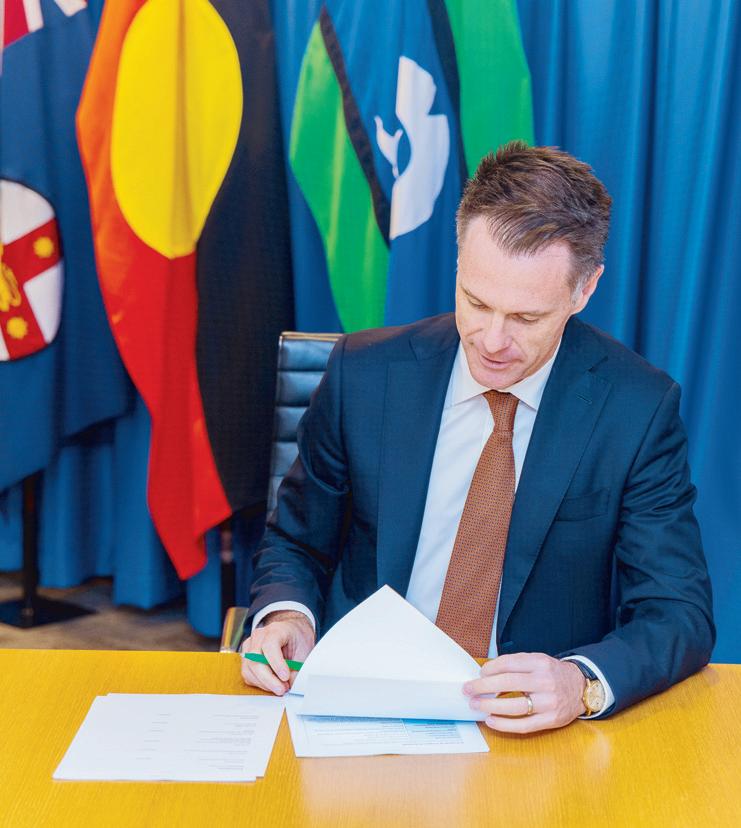
Minister for Regional Transport and Roads Jenny Aitchison said the deeds between councils and the NSW Government had been signed, and funding will soon start to flow, relieving the cashflow impacts on flood affected councils.
“Quickly restoring our roads and transport infrastructure is vital to setting up the regions for recovery from the floods,” she said.
“I have been personally meeting with these councils, alongside the Reconstruction Authority and Transport for NSW to help resolve their issues, and I am pleased this will see the quicker restoration of essential roads and transport infrastructure in Northern NSW.”
Tohelpprovideyouwithanimprovedexperience,we’reevolvingourmobilenetwork.Thismeans thaton30June2024we’reswitchingoffour3Gnetwork.Our4Gand5Gnetworkswillbe available insteadandofferanimprovedexperience,representingthenextleapforwardinmobile networktechnology.
Someofyourdevices-includinghandsets,medicaldevices,andEFTPOSmachines-mayneedto beupdatedorreplacedaheadoftheclosuretoensure ongoingservice.We’reheretohelpyouwith the change and answer anyquestions you mayhave.
The Federal Government is charging up electric vehicles and associated infrastructure with a $76 million funding package for electric vehicle projects to get more Australians into cleaner, cheaper to run cars.
The Clean Energy Finance Corporation will invest $50 million in finance with Angle Auto Finance (AAF), Australia’s largest independent retail auto financier, to get 20,000 new EVs onto Australia’s roads over the next two years.
AAF will provide short term loans to car dealerships to purchase vehicles from manufacturers, with dealerships to repay the loan when the vehicle is sold. This type of inventory financing has a shorter turnaround time than traditional auto finance, which can be between three-seven years.
More than $4 million from the Australian Renewable Energy Agency will help Europcar add 3,100 new, electric passenger ve-
hicles to its Australian fleet over three years, in a $110.6 million transition project to spur uptake of EVs. The rental car giant is also teaming up with Ampol to install 256 chargers across 41 hire car sites in airports, cities and towns to ensure cars are fully charged before pickup. Europcar will operate the EVs for up to two years before selling them on to grow the second-hand EV market.
Twenty-two million dollars will also be invested in backing three projects to electrify logistics fleets and local government vehicles in Western Australia.
Freight and logistics provider Centurion will deploy 30 electric trucks at its Hazelmere
depot. The new Centurion trucks will service industrial customers across Perth and support Centurion’s wider decarbonisation.
The Western Australian Local Government Association will lead the switch to EVs on behalf of WA councils purchasing 129 light EVs and associated charging infrastructure to help 22 local governments replace their diesel vehicles. Involving new charging sites across the state, the $12.3 million roll-out will help councils overcome the initial upfront cost and operational challenges.
In an Australian first for 24/7 terminal operations, Patrick Terminals at the Port of Fremantle will deploy nine battery electric vehicle
Applications for the Federal Government’s $200 million Play Our Way program are now open, supporting local governments and community, not-for-profit and sporting organisations to deliver projects that make sport more welcoming and equitable for women and girls.
Grants are available for programs that encourage women and girls to participate and remain involved in sport and physical activity for life, and for facilities for women and girls’ sport that better meets their needs.
Play Our Way grant applications will be assessed through an impartial and transparent process led by the Federal Department of Health and Aged Care.
The grant program was designed with the assistance of experts across sport and government, including former Australian netball captain Liz Ellis AO, Australian basketballer Lauren Jackson AO, former Matildas star Tal Karp, and wheelchair racer and Paralympian Madison de Rozario OAM.
Applications will close 2pm (AEST) on Monday, 29 April 2024.
Federal Member for Blair Shayne Neumann said that for every two men who played sport, only one woman did and too many girls dropped out of sport and never came back as women.
“Our $200 million Play Our Way investment is designed to turn this around, and will not only help women and girls maintain better physical and mental health, but will contribute to a sporting culture that treats women with equality, fairness and respect.
“By driving gender equality in sport, Play Our Way will allow women and girls to stay active and participate in sport for longer, and make our communities fairer, more inclusive and more harmonious.
“I encourage all local sporting clubs, com-
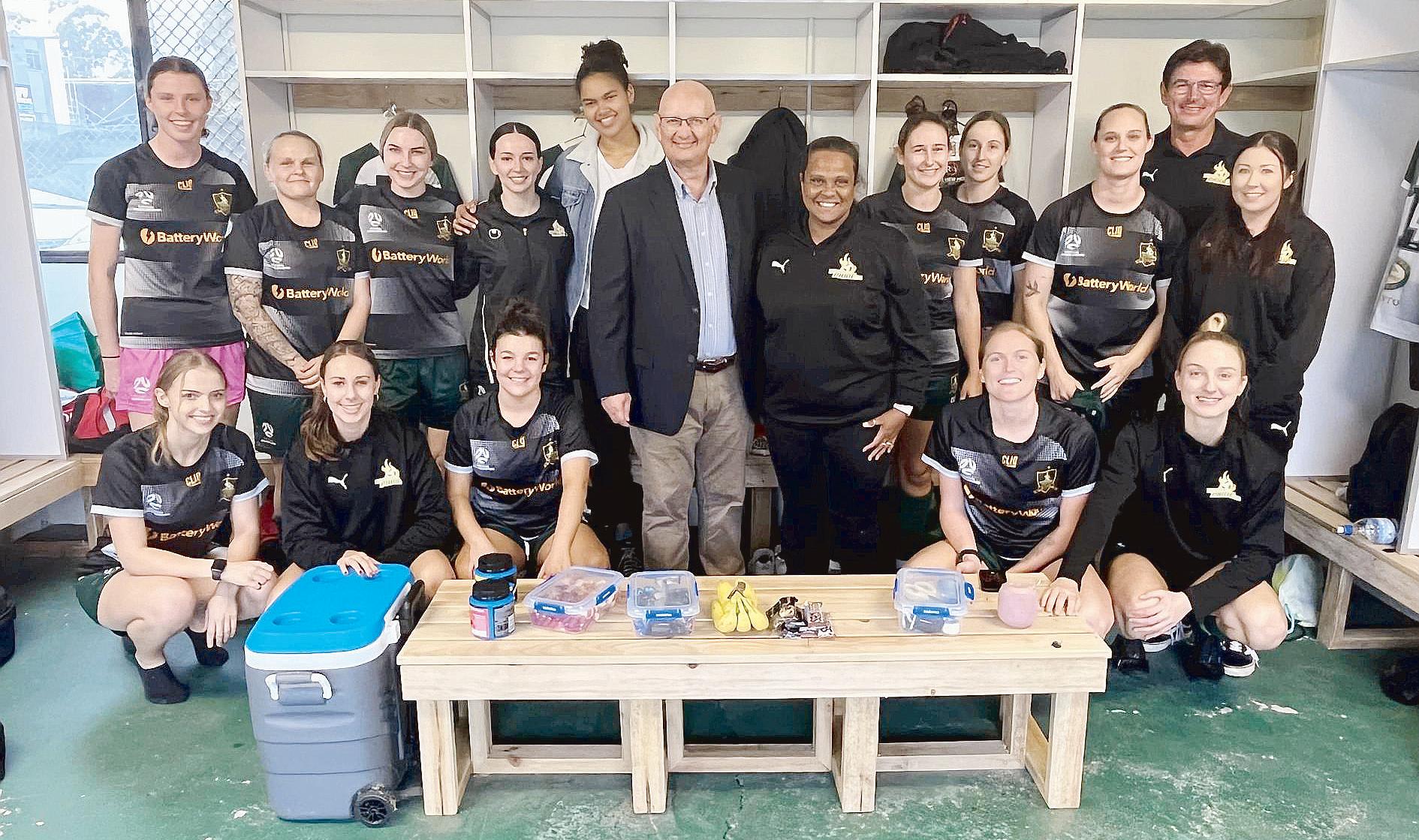
munity groups and councils that are involved in women’s and girls’ sport to consider applying for a grant through this fantastic new program,” Mr Neumann said.
Play Our Way program grants will be available in two streams:
terminal trucks and fast charging infrastructure to replace eight diesel models.
Minister for Climate Change and Energy Chris Bowen announced the funding in a speech to the Smart Energy 2024 Conference, saying the funding will help Australian households and businesses make the transition to cleaner, cheaper to run vehicles.
“The Albanese Government is committed to increasing the availability and accessibility of cheaper to run cars,” he said.
“Today’s announcement is a massive boost for motorists, local governments and businesses as well as charging infrastructure.”
Beyond Blue has welcomed the Prime Minister’s announcement that Sam Mostyn AO, the chair of Beyond Blue, will be Australia’s next governor-general.
Ms Mostyn is a prominent thought leader and advocate for mental health, equality, sustainability, and corporate governance across business, sport, climate change, the arts, policy and not-for-profit sectors.
Beyond Blue CEO Georgie Harman congratulated Ms Mostyn on her appointment.
“Sam is a trailblazer. She has served the Australian community as an exceptional and thoughtful businesswoman and leader and has worked diligently for equality throughout her career,” Georgie Harman said.
Participation and equipment: For programs that encourage women and girls to participate and remain involved in sport and physical activity for life, by tackling barriers such as disadvantage or lack of equipment, and for programs that will lead to sustained cultural change in sport.
Facilities: For projects that establish and improve sporting facilities for women and girls and further encourage them to take part in sport and physical activity by better meeting their needs.
The peak body for aged and community care providers in Australia welcomes the opportunity to provide continued input into the creation of the new Aged Care Act after confirmation the commencement date has been changed.
The new Aged Care Act was slated to come into effect from 1 July 2024. However, the Minister for Aged Care Anika Wells announced on 3 April the Government was considering the extensive feedback provided by the sector and the community, in order to refine and finalise the draft legislation before it is introduced to Parliament.
The Government will now update the commencement date of the legislation following a review of feedback received.
ACCPA CEO Tom Symondson said the new Aged Care Act was pivotal to the transformation of aged care and the sector’s ability to deliver the care we all want to see for older Australians.
“The new Aged Care Act was a fundamental recommendation of the Royal Commission into Aged Care Quality and Safety and welcomed by our members,” he said.
“This is a chance to usher in a new era to reform our aged care system. So, we need to make sure that the legislation, which will likely govern the aged care sector for the next 30 years, is not rushed. We need to get this right.
“We of course want to see the legislation passed and implemented as soon as practical. But this allows more time to engage meaningfully with older people, the community, the sector and other stakeholders. It is far more important that the legislation and associated requirements be passed when it is ready, than passed to meet the 1 July date.”
New legislation, with an impact of the magnitude of the new Aged Care Act, needs to be clearly articulated and achievable.
“We have been in ongoing and constructive discussions with the Government around transition timeframes, so that the sector has the time they need to plan for the new require-
ments under the Act. This will ensure the sector can implement the reforms and meet the expectations of the community.”
While the start date is to be confirmed by Government ahead of the introduction of the Bill to Parliament, the timing of the transition of new reforms within the Act is also critical.
“We are calling for at least six to 12 months transition from the time at which all information is available, including the finalised Act, Rules, guidance and education materials.
“A staged approach to implementation of these new reforms should also be adopted so providers can effectively manage change within their organisations, their workforce and engage with their residents and care recipients.”
“Older Australians deserve nothing less than the confidence that Australia will get this right.”
“The community will continue to benefit from her compassion and service as she takes on this role as our next governor-general. We will be a better and more inclusive country for it.”
As is protocol for governor-general designates, Ms Mostyn will stand down effective immediately as the chair of Beyond Blue, ahead of being sworn into her new role from 1 July.
“Sam has been one of the most effective and passionate advocates for better mental health and suicide prevention I know,” Georgie Harman said.
“She is a leader of extraordinary vision who expands the conversation about mental health to include mental wealth, emphasising how the health of our society contributes to our mental health and wellbeing as individuals.
“Australia’s mental wealth improves with good education, affordable and safe housing, strong communities, and efforts to lift people out of poverty.
“Sam has contributed so much during her time with Beyond Blue, including championing and guiding the early implementation of our new five-year strategy, ‘Earlier, Easier, Together’.
“We are extremely grateful for Sam’s guidance and so thankful to her for sharing her deep expertise and knowledge so generously. We wish her well for the future as she steps into this new appointment.”
Ms Mostyn was appointed to the Beyond Blue Board in early 2023 and commenced as chair on 1 January this year. Beyond Blue is currently in the process of appointing an interim chair.
Golden Plains Shire Council CEO Eric Braslis has announced his resignation after more than six years of dedicated service. Mayor Cr Brett Cunningham expressed his disappointment to receive the CEO’s resignation, however acknowledged the Shire was well placed given Eric’s commitment to his role during this time.
“Eric, who previously served as CEO at Gannawarra Shire, joined Golden Plains Shire Council during a critical phase, tasked with leading the organisation through a transformative period of growth and development,” Cr Cunningham said.
“During his tenure, Eric successfully navigated the organisation through challenging times, including the impacts of the Covid-19 pandemic.
“Under his leadership, Golden Plains Shire Council achieved significant milestones, notably completing the largest capital project in the Shire’s history with the construction of the Civic Centre.
“Additionally, Eric led visionary initiatives such as the preparation of the Bannockburn South Growth Plan and the implementation of the Growing Places Strategy, a comprehensive roadmap for managing the shire’s growth up to 2051, anticipating a population exceeding 50,000 residents,” he said.
Cr Cunningham acknowledged Eric had fostered strong relationships with both State and Federal Governments, and his persistent advocacy resulted in record levels of funding directed towards the Shire in recent years.
“Eric’s commitment to improving the organ-
isational culture and enhancing staff satisfaction has been evident, marked by annual improvements since his appointment. Under Eric’s guidance, Golden Plains Shire Council prioritised gender equity, affirmative action against sexual harassment and the establishment of a set of corporate values ingrained within the organisation,” Cr Cunningham said.
“Throughout challenging economic conditions, Eric has not shied away from taking risks and making bold moves for the betterment of Council and the community. Known for his innovative approach, Eric explored unconventional avenues to enhance the efficiency and effectiveness of the business,” he said.
Notable achievements during Eric’s time as CEO include the exploration of private land development opportunities in Teesdale and Bannockburn, the successful commercialisation of the Bannockburn Shire Hall and the transition of council-run childcare services to Kardinia, which now generates revenue for the Council.
“On behalf of the councillors and the whole of the organisation I wish him every success in the next opportunity. While Eric’s departure leaves a void within the organisation, we are confident in our reputation and capabilities to secure a suitable replacement to guide the newly elected Council in November,” Cr Cunningham said.
The search for Golden Plains Shire Council’s new CEO has already begun in an attempt to ensure a seamless transition and continued progress for the organisation.

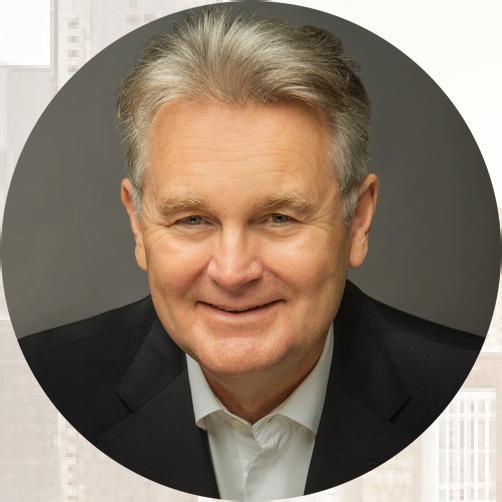
Luke
Over nearly 20 years, Luke has built a strong career in Local Government beginning with the City of Kingston as a Strategic Planner in 2005.
Luke is well respected across the Local Government sector and said he can’t wait to leverage his experience and passion for local government within Baw Baw.
“I’m really excited to work closely with the council officers, councillors and community to continue to plan and service the amazing existing and new communities within the Baw Baw Shire,” Luke said.
“The diversity of considerations and landscapes within the Shire is an exciting prospect to learn more about, and strengthen the understanding of what makes our community such a great place to live.”
Just three days into the role, Luke said he’s had a busy few days.
“The welcome I received when first walking through the doors to Baw Baw and all the way through the office has been amazing. I feel like I’ve been a part of the organisation for more than three days,” he said.
“It has been a busy few days being introduced to many new faces but also reacquainting myself with staff I’ve worked with previously across other organisations. My focus for now is listening to what we need to focus on in our directorate, and how we can collaborate across the organisation to deliver great outcomes.”
Luke will oversee the Planning and Development directorate, which includes the areas of Community Safety, Compliance and Stra-
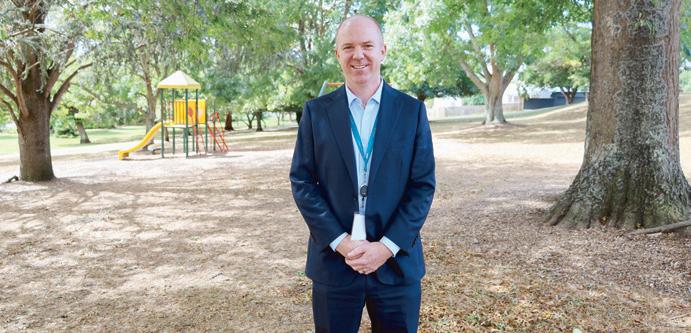 Luke Connell.
Luke Connell.
tegic Planning.
Baw Baw Shire Council Chief Executive Officer Mark Dupe welcomed Luke to the organisation and said he looked forward to drawing on his wealth of knowledge and experience.
“Luke will bring a lot to not only the role of Planning Director, but to the entire Baw Baw Shire community. We are thrilled to have him here with us and I look forward to seeing the impact his work has,” Mark said.
Over a span of more than two-and-a-halfyears at Kingston, Luke contributed strongly to the city’s strategic planning initiatives, after which he transitioned to the City of Greater Dandenong as a Town Planner for Major Projects. There he dedicated more than three years in shaping significant urban developments.
Luke’s career then progressed with many senior leadership roles at the City of Casey, one of the fastest growing and largest municipalities in Victoria. Most recently, he has spent nearly eight years at Cardinia Shire Council playing a pivotal role in the growth, planning and design of the area.
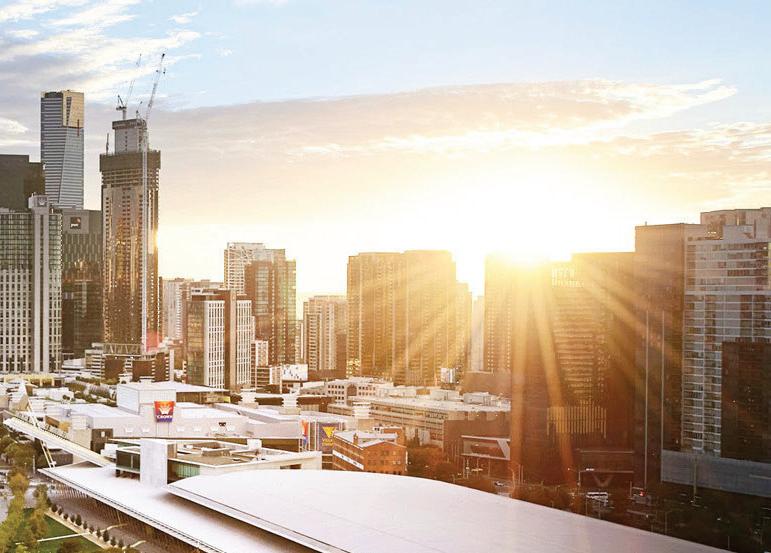




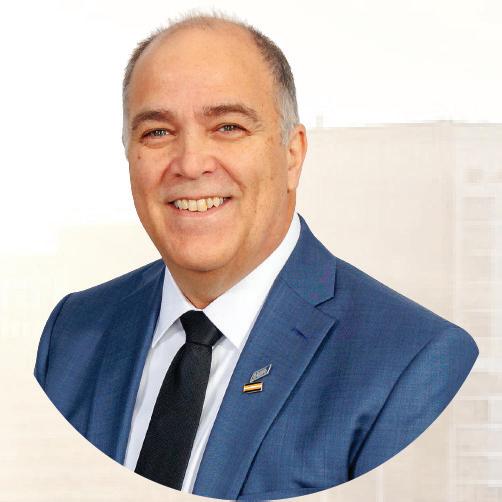
With 40 per cent of councils struggling to secure qualified urban and town planners, the Australian Local Government Association has welcomed the opening of applications and release of guidelines for the Federal Government’s new $500 million Housing Support Program.
Through the first round of the program, state, territory and local governments can access funding to improve planning capacity as well as streamline planning processes.
ALGA President Cr Linda Scott said the group’s research showed 40 per cent of councils were struggling to secure qualified urban and town planners, which was “holding us back from facilitating more affordable housing in our communities”.
“We have been advocating for more support to increase our planning capacity and capability and are thrilled the Government has responded with this new funding program,” she said.
“It’s also encouraging that the Housing Support Program will fund important pre-planning work such as master planning or assessing hazards to improve the resilience of new housing developments.
“I urge all councils to consider applying for this new funding before the deadline of 29 April 2024.”

Cr Scott said local governments were committed to helping deliver the Commonwealth’s ambitious housing targets and enable vital infrastructure investment in new housing developments.
“However, we can’t effectively address the nation’s housing crisis by simply building more
houses – we also need to build more parks, libraries, playgrounds, recreation centres and swimming pools,” Cr Scott said.
“ALGA is calling for the Housing Support Program to be increased from $500 million to $750 million in the upcoming Federal Budget, with the additional $250 million available to local governments for infrastructure to improve the liveability of new housing developments.”
Cr Scott said local governments also look forward to seeing the Government’s revised Trajectory for Low Energy Buildings and the Net Zero Built Environment Sector Plan to provide improvements in housing affordability and liveability.
“Our communities want and deserve higher quality buildings that are safer, more resilient and energy-efficient,” Cr Scott said.
“We also want to reduce the extra costs being incurred by local governments for providing services to poorly designed developments and neighborhoods.”
A development at Mount Pleasant Estate, delivering up to 50 dwellings in Goonellabah, is the next stage of the $100 million Resilient Lands Program (RLP) to bring on new floodresilient land in the Northern Rivers.
Construction and enabling works for land sites will begin by mid-2024.
The Mount Pleasant Estate site will demonstrate the best use of mixed-housing types designed to integrate with the surrounding neighbourhood and natural features.
Mount Pleasant Estate is the second site to be identified under the RLP and follows the 9 February announcement of more than 400 new homes proposed at East Lismore, thanks to a partnership between the Reconstruction Authority (RA), Southern Cross University and Landcom.
The $100 million RLP aims to accelerate the delivery of new land and housing options, linking with the $700 million Resilient Homes Program (RHP) to give flood impacted homeowners a pathway to move off the floodplain and out of harm’s way.
It comes off the back of a communityfocused reset of recovery efforts which is being informed by feedback from the Northern Rivers Community Leaders Forum as well as an extensive campaign door-knocking thousands of homes, carried out by the Reconstruction Authority.
This feedback has helped the RA to develop a more people-friendly, place-based approach to determine eligibility under the RHP, supporting our most vulnerable homeowners.
It will also achieve better outcomes – reducing the fragmented nature of buybacks in some locations, where single homes may be left in some streetscapes.
Lismore Mayor Cr Steve Krieg has welcomed the announcement.
“This is a great announcement and another important step in the right direction for the recovery of our community,” he said.
“The partnership between the NSW Government and Lismore City Council continues to be strengthened, providing more housing and more security for our region.”
Recommendations from the Peer Review of the Resilient Homes Program’s flood mapping and methodology also influenced these enhanced eligibility requirements. The review was completed by a panel of experts.
The original methodology for the Resilient Homes Program prioritised home buybacks for homes at the greatest risk under most future flood scenarios.
While the independent review was generally supportive of the prioritisation approach used for the Resilient Homes Program, it made 25 recommendations relating to eligibility, prioritisation, and the implementation of the program.
The NSW Reconstruction Authority has accepted all the peer review recommendations, and they will also be used for continuous improvement of risk assessment methods used by the NSW Government.
To prepare for future disasters the NSW Government has developed Australia’s first State Disaster Mitigation Plan (SDMP) to help mitigate natural hazards such as floods, bush fires, storms, cyclones and coastal inundation.
This work will also help inform a Disaster Adaption Plan for the Northern Rivers which is currently under development.
NSW Minister for Planning and Public Spaces Paul Scully said together, the Resilient Lands Program (RLP) and Resilient Homes Program (RHP) form the largest assisted relocation program in Australia to date.
“The RLP aims to accelerate the delivery of new land and housing to provide participants of the RHP with more options,” he said.
“At Mount Pleasant, purchasing dozens of adjacent lots in an existing development allows the Reconstruction Authority to purpose plan and build the community. The land is ready to go.”
Minister for Emergency Services Jihad Dib said the important initiatives will help reduce the impacts of future flooding and build further resilience in the community. The announcement of a second land release site shows our ongoing commitment to the region and we will continue to help the Northern Rivers rebuild.
“The Reconstruction Authority will now reach out to Resilient Homes Program participants who have received a buyback offer to confirm their interest in purchasing land and housing made available under the Resilient Lands Program.”
Parliamentary Secretary for Disaster Recovery, Member for Lismore, Janelle Saffin said it was great to see more land from the Resilient Lands Program come to Goonellabah.
“More land means more homes that are needed to support the community’s recovery.
“I look forward to more projects being announced in our neighbouring local government areas.”

Nine applications for funding to deliver key worker housing in Mansfield Shire have been submitted to Regional Development Victoria.
These projects, if successful, will create more than 400 new housing options.
A large portion of the applications were the outcome of a workshop Mansfield Shire Council held with property developers to specifically address the key worker housing shortage in the region.
The workshop, which took place in December last year, considered the issues of housing for key workers as the Shire grows.
The population of Mansfield Shire is expected to increase its population by fifty percent over the next 20 years, from 10,540 to 16,144 people. To keep up with demand, 115 dwellings per year would need to be built, instead of the current 94 dwellings per year.
Mayor Cr Steve Rabie said that the nine applications submitted offered promise for the future of housing and liveability in Mansfield Shire.
“These projects offer innovative solutions to the housing shortage. If these projects are successful, we would be able to host the nurses, teachers and other key staff we need for our community,” said Cr Rabie.
“There is huge demand to live in this wonderful part of the world. We need smart solutions, and we need to work together to keep up with the demandwhile maintaining what makes Mansfield Shire a beautiful place to live.
“We are excited by the potential for these projects to make a real difference in our community. By addressing the cost of living for key workers, we enhance the economy of our whole community.
“The work Council is doing in this space demonstrates our commitment to more affordable housing. By bringing key players in the housing market together, we took a significant step toward a better economic future.”
A push to build 12 houses in 12 months, to make airfares fairer, and to improve Blackwater’s liveability are among the first targets of a major new plan for the Central Highlands.
Central Highlands Development Corporation (CHDC) has launched the Central Highlands Workforce Development and Accommodation Strategy (WDAS).
“At its heart, this is a plan to help our region realise its full potential as a fantastic place to live, work, invest, and play,” CHDC CEO Peter Dowling says.
“The Strategy sets out practical steps to knock down those key barriers, such as the scarce housing supply and childcare places,
that stand in the way of the Central Highlands attracting and retaining a skilled workforce.”
Business operators are invited to CHDC’s Working Lunch on 19 April to find out more about the project. Tickets are available at chdc. com.au.
CHDC developed the WDAS in partnership with the Central Highlands Resources Roundtable and Central Highlands Regional Council, with the assistance of leading consultants Infinitum Partners and National Property Research
Co and key stakeholders across the agricultural, education, construction and childcare sectors.
“Collaboration is integral to this project achieving meaningful change,” Mr Dowling says. “This document is the result of months of extensive engagement with stakeholders across the region and represents their commitment to implementing innovative solutions to these complex issues.”
The first task will be to form a Workforce and
Accommodation Collective (WAC) by June this year to drive the Strategy’s short- and mediumterm actions. These actions include opening Expressions of Interest to builders and developers to support a 12 in 12 campaign, which will see at least 12 new builds across the region within 12 months. The short-term initiatives also put focus on Blackwater’s childcare shortage and shopping limitations, and the opportunity to transform the town’s Dempsey Park into a vibrant social and leisure hub.
Piling works for the Lake Boga Floating Pontoon began in mid March, marking a significant milestone in the renovation project.
Swan Hill Council Director Infrastructure, Leah Johnston said the works were essential for ensuring the stability and structural integrity of the pontoon.
“These works are part of stage one of the project and once completed the pontoon will be reopened to the public, allowing residents and visitors to once again access this beloved recreational spot,” Ms Johnson said.
Council’s Mayor, Cr Stuart King said the project was aimed at enhancing recreational facilities at Lake Boga for residents and visitors alike.
Ms Johnston said she anticipated that the entire project would be finalised by the end of May 2024.
“Council is committed to ensuring minimal disruption to the community throughout the renovation process and we appreciate the patience and understanding of residents and visitors as we work towards improving the facilities at Lake Boga,” Ms Johnston added. Pontoon work is underway.
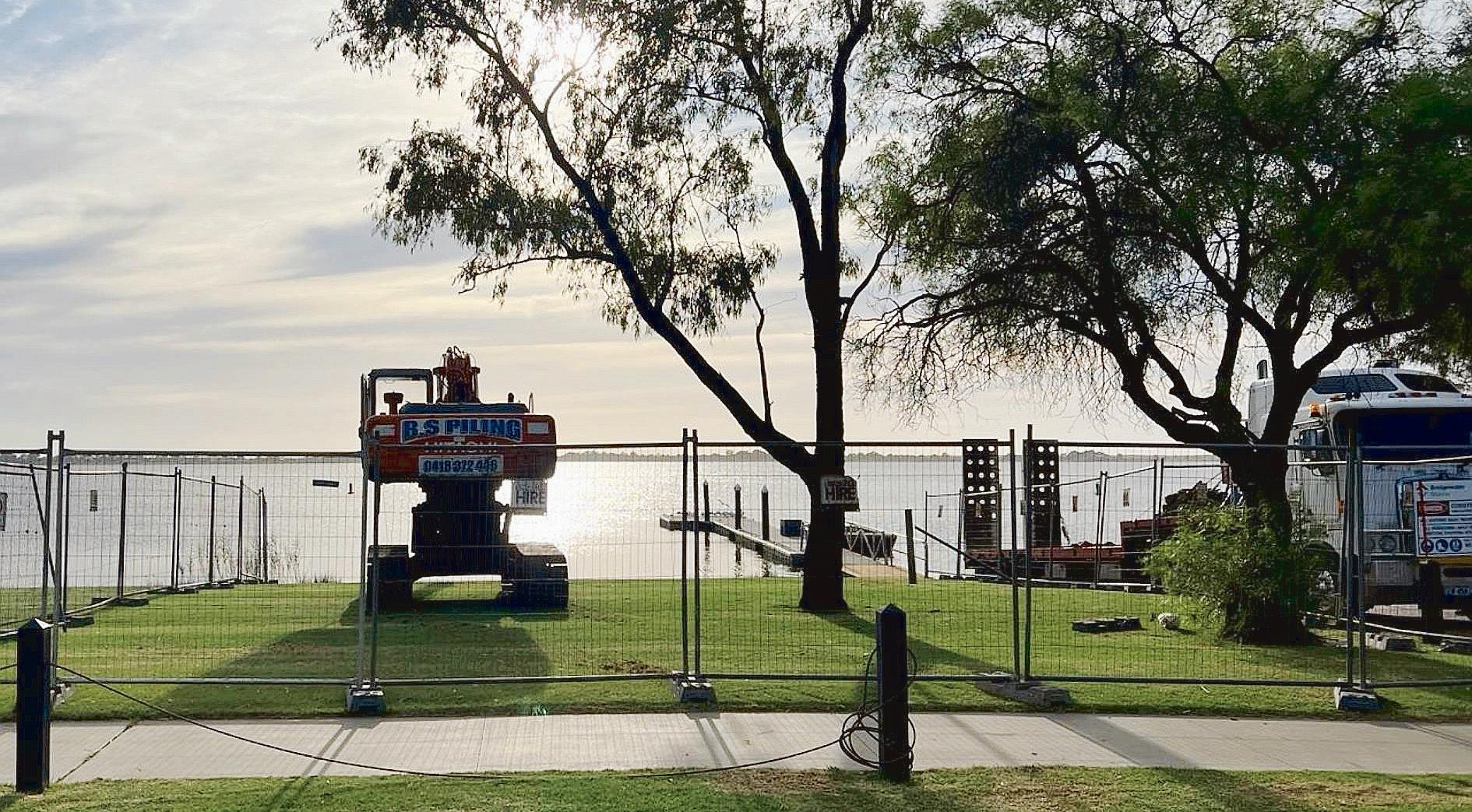
Greenhouse gases will be captured and destroyed at
Hanrahan Road Waste Facility thanks to an agreement with environmental services company LMS Energy to reduce methane emissions.
The City of Albany is making progress towards a more sustainable future by partnering with methane abatement company LMS to install an innovative biogas system at the site.
Once installed, the system extracts and destroys methane, a potent greenhouse gas that naturally forms as organic matter decomposes in the landfill.
The long-term contract signed with LMS aims to destroy up to 850,000 cubic metres of methane each year, which is the equivalent of removing 7,500 average Australian cars from the road per year or growing 300,000 trees across a 10-year period.
LMS Energy’s Client Group Manager, Jason Dockerill, said methane destruction at landfills is an important climate strategy because methane is a highly potent greenhouse gas.
“Methane is 28 times more damaging than carbon dioxide at trapping heat in the atmosphere,” Mr Dockerill said.
“A series of wells will be drilled and installed throughout the landfill site to extract harmful greenhouse gases such as methane. A system of pipes will then transport the methane to LMS Energy’s industry leading biogas flare, where they’re safely destroyed.
Marking a significant stride towards a sustainable and environmentally responsible future, the Benalla Rural City Council has decided to join the Victorian Energy Collaboration (VECO).
The decision was made during the Council Meeting held Wednesday 20 March.
The Victorian Energy Collaboration (VECO) stands as the largest emissions reduction project ever undertaken by local government in Australia. Initiated in July 2021, VECO saw over 46 Victorian councils commit to sourcing 100 per cent of their energy from renewable sources.
Now, with over 50 councils participating, Benalla Rural City Council joins this collective effort towards a greener future. Mayor, Cr Danny Claridge, expressed his enthusiasm for the decision.
“Joining the Victorian Energy Collaboration aligns perfectly with our commitment to sustainability and environmental stewardship,” he said.
“This move not only demonstrates our dedication to reducing our carbon footprint but also showcases our leadership in embracing renewable energy solutions.”
The decision to join VECO comes after thorough consideration and analysis of the environmental and financial benefits it presents. Benalla Rural City Council recognises the importance of transitioning to renewable energy, not only for the environment but also for its long-term financial stability.
“The move is expected to result in significant cost savings, with an estimated $415,000 to be saved over the next five years compared to businessas-usual practices,” Cr Claridge said.
City of Albany waste facilities.
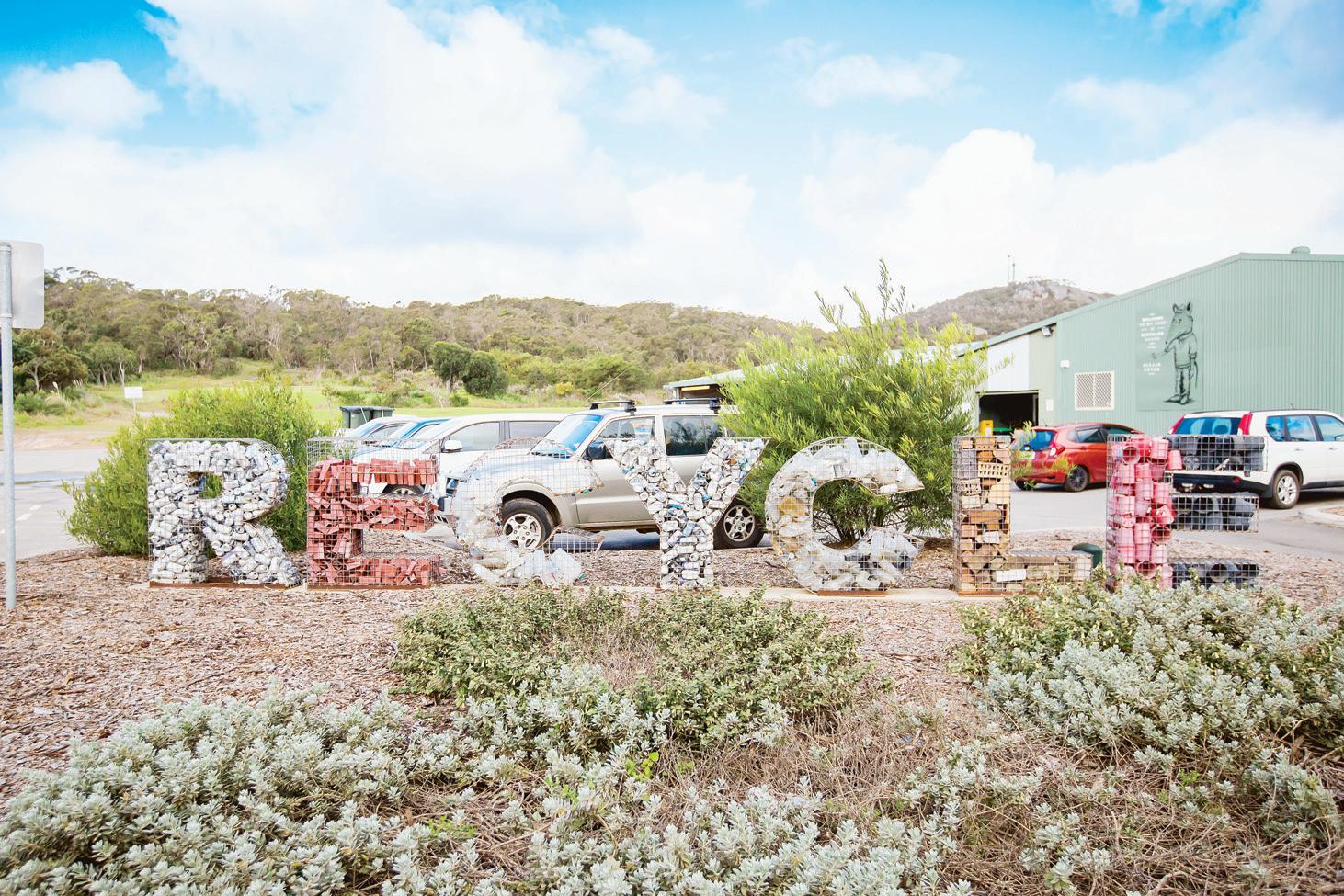
“The flare will be engineered and manufactured in-house by LMS. Without this, the methane would primarily be released into the atmosphere.”
Mayor of Albany Greg Stocks said it will be the first-time greenhouse gas emissions have been captured at the Hanrahan Waste Facility landfill site.
The contract with VECO is set to commence on 1 July 2024, and will run until 31 December 2030, with the option to extend by mutual agreement.
Kerbside food and organics waste collected from Launceston homes is being used in a $1.5m environmental remediation project at the Launceston Waste Centre.
The City of Launceston is remediating three clay borrow pits, some dating back several decades, which have been used to supply clay for the lining and capping of landfill cells.
As part of the environmental requirements for the management of the landfill site, the Council is now returning the clay borrow pits to a natural state. City of Launceston Mayor Matthew Garwood said more than 4000 tonnes of FOGO (food organics, garden organics) compost material was being used in the project, with the three clay borrow pits covering a total area of 9Ha.
“This project is a great example where we’re utilising the resource generated from food and organics waste from Launceston homes to make a big difference in the environment,” Mayor Garwood said.
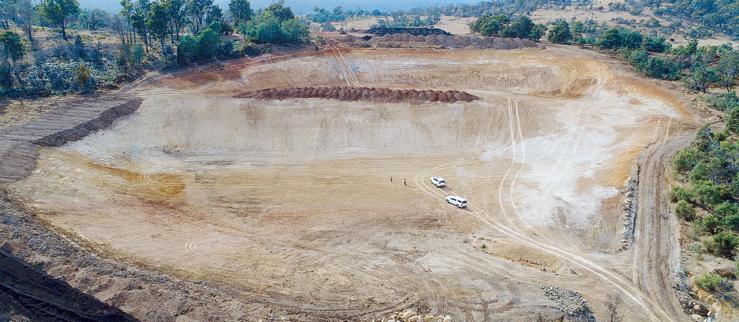
Compost being used to repair claypit scars.
“Over the years, clay from these pits has been used to line landfill cells, and also as capping for landfill cells.
“This project will see the decommissioning of roads leading to the borrow pits, earth works to remediate the area, and revegetation including topsoil and seeding.”
“City of Albany is doing its bit to reduce its carbon footprint and help curb methane emissions and slow the rate of global warming.
“Together, we are working to reduce the environmental impact of waste and preserve our planet for generations to come.”
“The City’s landfill site receives 30,000 tonnes of waste each year where a portion of this is made up of organic matter which will eventually decompose and produce methane,” Mayor Stocks said.
Pricing will be reviewed every two years to ensure continued financial viability and stability for the Council.
“This move reflects Benalla Rural City Council’s dedication to sustainable practices and good governance, as outlined in its Council Plan 2021-2025,” Cr Claridge said.
A Smart Drainage program has delivered significant flow-on effects for the City of Gosnells’ maintenance and asset management programs. The program uses smart technologies to improve the way drainage is managed in the City, and was recognised last month at the Institute of Public Works Engineering Australia (IPWEA) WA Excellence Awards, with awards for Excellence in Asset Management and Excellence in Innovation – Metropolitan.
Mayor Terresa Lynes said with two major rivers and large areas of wetland within the City’s boundaries, drainage was critically important.
“Drainage is essential but often-overlooked infrastructure that needs to be done well for our City to be a great place to live, work and spend time,” she said.
“The program to implement smart technologies in the City’s drainage management has been a fantastic success, improving the City’s ability to monitor, maintain and repair the drainage network, reducing the effects of drainage work on nearby residents, providing early warning of local flooding and saving the City money.
“Introducing this suite of cutting-edge technologies and strategic planning has improved the way the City manages this critical public infrastructure, in a cost-efficient way.”
The technologies implemented as part of the program include tractor-mounted CCTV to investigate inside pipes, push cameras to go where the tractor cannot reach, Ground Penetrating Radar (GPR) connected to interpretive software to identify and accurately size voids in the soil surrounding damaged pipes, expanding foam technology to fill those voids and flow meters linked to texting software so the City’s drainage crews are called to the site before it actually floods. The roll-out of flow-meter technology across recognised high-risk flooding locations within the City is continuing.

City of Gosnells
the City.
The City of Stirling is on track to achieve its 35 per cent reduction in emissions goal by 2025, according to a recent progress report.
The report has come just as the Federal Government announced it will provide $22 million in funding to local governments to replace petrol and diesel vehicles.
The City’s Sustainable Energy Action Plan 2020-2030 (Corporate) maps out a path to net zero by 2050 in accordance with the Australian Government’s commitment to the Paris Agreement.
Along the way to 2050, important 2025 and 2030 targets in emission reductions and renewable energy usage are being tracked, as well as the savings these measures are bringing to the City.
Over the first three years of the energy initiatives governed by the SEAP, the City can reveal that a 27 per cent reduction in emissions has occurred. This is due to initiatives including: 1,019 kW worth of solar photovoltaic (PV) systems, which reduced greenhouse gas emis-
sions by 716 tCO2-e in 2022/2023 alone, 28 electric vehicles (EVs) in the fleet including one truck, three vans, three utility vehicles and 21 passenger vehicles, the installation of four dual EV charging stations at the public carpark of the Administration Centre, 10 at the Administration Centre’s underground carpark, one dual charger behind the Bob Daniel Community Centre in Inglewood and 16 stations at the Operations Centre.
The work will be supercharged thanks to the $1.2 million worth of funding secured for the City of Stirling with the support of WALGA to assist with the fleet transition from petrol and diesel to EVs.
Mayor Mark Irwin said progress against the SEAP targets was pleasing to see, as it was an important component in the plan to achieve the City’s vision of a sustainable City with a local focus.

“The City is progressing well toward our ambitious but pragmatic goals of achieving substantial reductions in our reliance on emissions-intensive technologies,” he said.
“At the heart of plan for renewable energy generation is the combination of our participation in another WALGA-led Power Purchase Agreement (PPA) initiative – a collaborative agreement with around 40 other local governments to purchase clean energy – in combination with our own Solar Escalation Program which now sees $600,000 budgeted annually to increase our own solar power production.
“We thank the Commonwealth Government, ARENA, WALGA and the State Government for combining forces to deliver this critical new funding to assist local governments in the capital costs of transitioning their fleets.”
The Schools First Street Tree Planting project is an innovative climate and health initiative led by Maroondah City Council to adapt existing tree planting operations to equitably support active travel to school, and strategically improve tree canopy across the municipality.
The program utilised work begun in 2017 by Maroondah City Council’s Transport and Sustainability Planner, VicHealth, and local school communities to identify a one kilometre radius of safe walk and ride to school routes around 17 participating local schools.
The council teams identified an opportunity to make these routes safer and more appealing by adding trees for shade, shelter, greenery and a physical barrier between pedestrians and the roadway.
To prioritise this planting, Council’s Strategic Environment Planner developed a desktop analysis to identify those schools that have lower levels of tree canopy and foliage cover and high heat vulnerability, combined with higher levels of socio-economic disadvantage.
Eleven schools were prioritised through normalised scoring by applying a combination of the following data to the walking catchments and walking routes for each school: tree canopy and foliage cover (using technology that uses machine learning to detect foliage cover from aerial imagery); number of primary-age children within each school’s walking catchment (using ABS data); and relative socio-economic advantage and disadvantage (using SEIFA (Socio-Economic Indexes for Areas) derived from ABS data).
Approximately 600 opportunities for tree planting across three locations were identified in 2022.
During and after the planting period, high levels of positive feedback were received from schools and the surrounding residential communities in these planting areas. The short-term benefits have been clear to see, with more school children choosing active transport options to travel to school, and families able to get outside and enjoy greener, more shaded streets. A full analysis is yet to be undertaken.


Central Coast Council’s Water and Sewer department remains steadfast in its commitment to continuous improvement and meeting customer expectations.
Providing water and sewer services to more than 139,000 homes and businesses on the Central Coast, Council is taking proactive and responsible measures to provide safe, reliable, and sustainable services. These efforts are crucial in supporting the ongoing growth and development of the Central Coast.
The introduction of new assessment technology for long distance water and sewer pressure pipelines offers numerous advantages with a focus on customers, cost efficiency and the environment.
The sensor-based technology named ‘pCAT’ measures the condition of water pipelines without needing to dig up the pipes. The technology also helps in planning water and sewer renewals and upgrades more efficiently, through improving prioritisation for renewal projects, ultimately saving on long-term expenses.
The assessment technology will also reduce water outages and minimise environmental and safety risks during maintenance and repairs.
The council is also set to improve water service reliability and enhance water conservation on the Central Coast by using a new type of valve used in cases where Council needs to replace large valves during essential maintenance works.
The (‘S’ Gate) valve does not require the
water to be turned off, so, unlike in previous situations, customers will not experience disruption to their water supply. Water wastage is estimated to be reduced by up to 95,000 litres per job.
In another proactive move, Council has partnered with Sydney Water’s Lead Detection Dog Team with trained dogs helping to identify leaks early, preventing greater disruptions and reducing repair costs.
Council Director for Water and Sewer, Jamie Loader said Central Coast Council was proactive in seeking new ways to provide the Central Coast with reliable services, and a cost-efficient and sustainable water future.
“The introduction of new tools and technology to do our work helps ensure that Council can meet the future resource demands on the Central Coast, as we build resilience to environmental changes,” Mr Loader said.
Detection dogs.


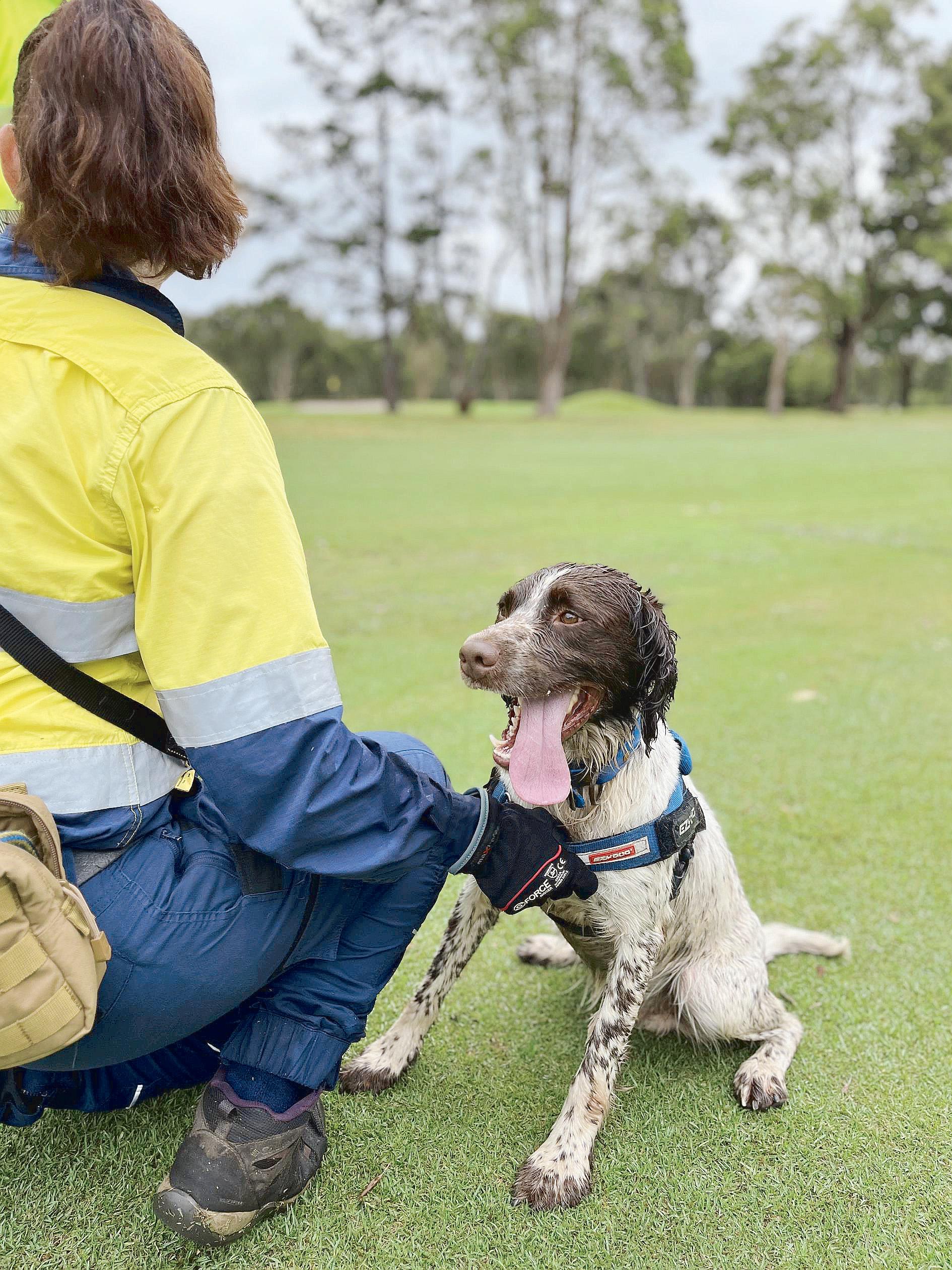

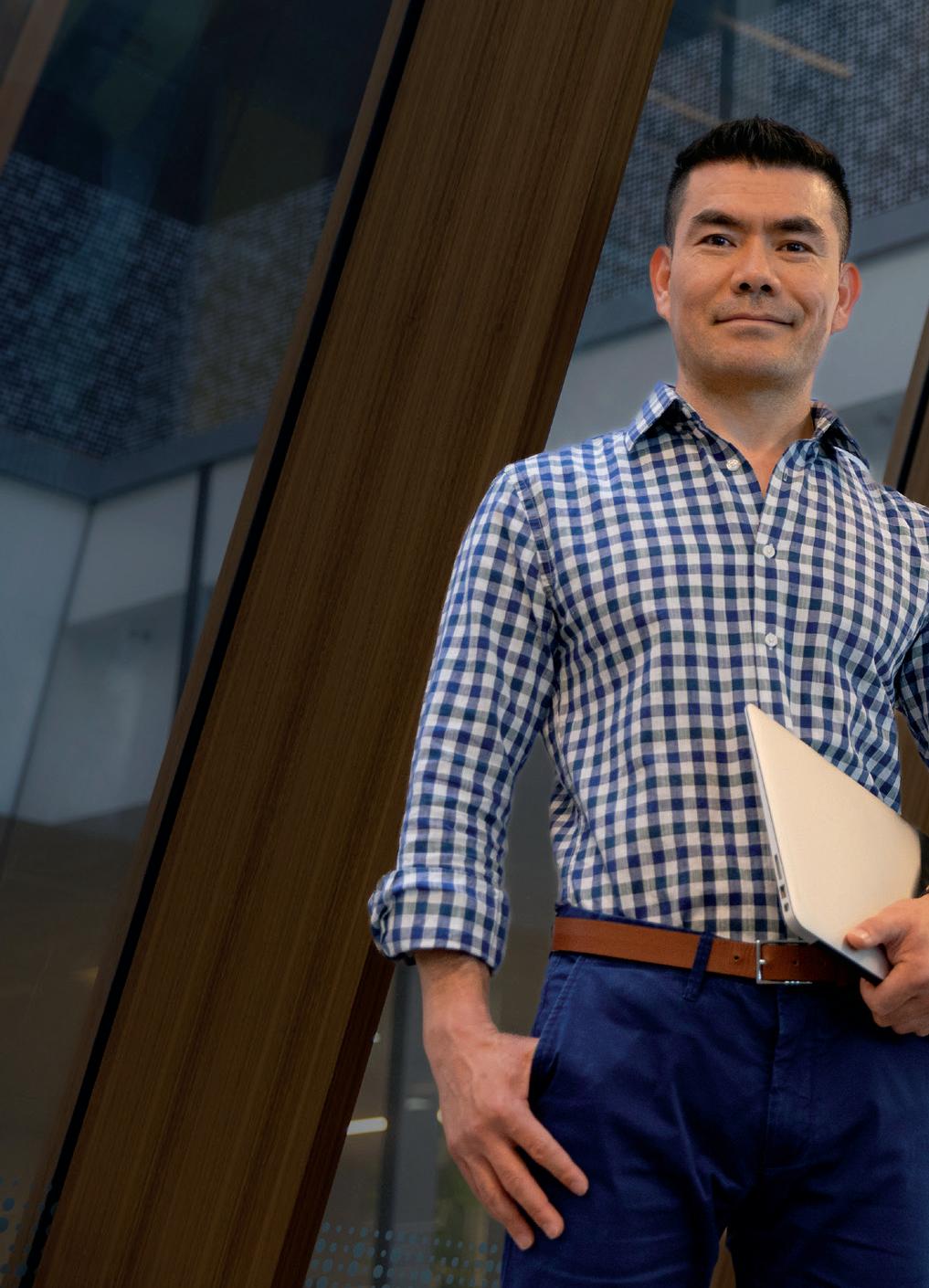

City of Coffs Harbour Mayor Cr Amos has questioned NSW Government plans for the Coffs Harbour Jetty Foreshore area.
“NSW Property Minister Steve Kamper says a plan to slice off a section of publicly-owned land at Coffs Harbour’s Jetty Foreshores to accommodate up to 450 dwellings is ‘fairly light on’,” he said.
“That is equivalent to more than seven Pacific Towers,” said City of Coffs Harbour Mayor Cr Paul Amos who is leading the charge to keep the Foreshores as the ‘People’s Playground’.
“So if that colossal number of units is fairly light on, what is the true intent of the development of the flood-zoned land between a road and the railway track at the Jetty Foreshores?” the Mayor said.
He said with a plan so short sighted that it lacks a second access for 450 extra dwellings, it is certain to put additional pressure on car parking at the already busy Foreshores.
However Mr Kamper said the plan was “a fantastic opportunity for Coffs Harbour to revitalise its foreshore”.
“The land we intend to build on is either currently fenced off land next to the railway, or a gravel carpark, neither of which are being well utilised,” the Minister said.
“The plan for the Coffs Harbour Foreshore will increase green space by two and a half football fields.
“Every cent raised by this project will be reinvested into the Coffs Harbour precinct.
“This project will deliver more business, more jobs, more housing, more greenspace, and a more inviting Coffs Harbour Foreshore.”
The Mayor said Mr Kamper was guided around the Foreshores site on Tuesday, 2 April, by Coffs Harbour MP Gurmesh Singh, with the Minister telling media the pair were “in lockstep” on plans to clear the way for high-rise at
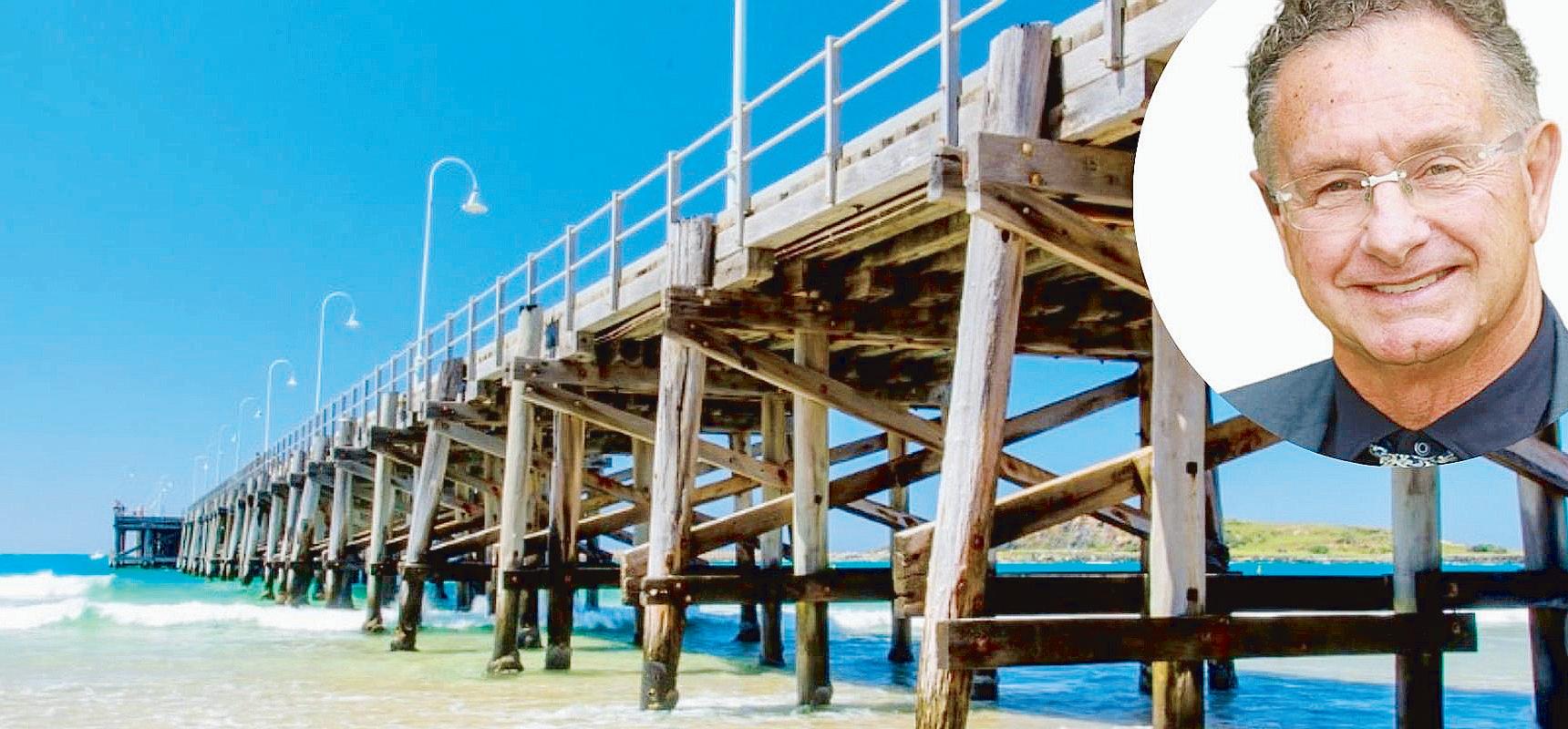
the Jetty.
However he said the City of Coffs Harbour had a “bolder vision than that – one that would optimise the waterfront land”.
“These parklands are an essential community meeting place for locals and visitors and the cost of selling them off to commercial hands will haunt us for generations,” Cr Amos said.
“Once it’s gone, it’s gone. Are we prepared to let an absentee, Sydney-based government dictate their version of our future? I’ve had over 11,000 residents elect me as their Mayor but the Minister is prepared to ignore these people and believes he knows it all because of selective responses to a clearly biased survey.”
The mayor said the City offered to buy the State Government land at the Foreshores late
last year for $6.7 million, offering on top of that two inner city blocks suitable for high-rise affordable housing.
“But that was rejected by the State using technicalities not identified as necessary for the submission, so the City is now investigating a compulsory acquisition process for the land,” Cr Amos said.
“The State is blinkered on this. I heard on the grapevine that Minister Kamper was in Coffs at the Fishing Club so I went down there to put the community’s side, but was ignored.
“I’ve also had no cut-through in seeking to work with the NSW Government to see if there’s some common ground from where we might find a solution that is favourable to the community.”
Scenic Rim Regional Council has completed significant works at the heritage-listed Lahey’s Canungra Tramway Tunnel with more scheduled in coming months.
The Tramway Tunnel project is being funded with the support of the Environmental Recovery Program, which is jointly funded by the Australian and Queensland Governments under the Disaster Recovery Funding Arrangements, in association with Scenic Rim Regional Council.
The $35,000 project has focused on restoring the tramway tunnel which was first used in 1903 and listed on the Queensland Heritage Register in 2005.
These works have included removing
storm debris at the entrance to the tunnel, repairing one of its external walls, and restoring the access track to the tunnel from Duncan Street, Canungra.
Further works are scheduled at Lahey’s Canungra Tramway Tunnel in coming months and Council asks that everyone keeps well away from the site during this time as heavy machinery will be in use.
The 91-metre Lahey’s Canungra Tramway Tunnel, cut through sandstone of the Darlington Range, was part of a tramway route
owned by the pioneering Lahey family, whose sawmill was key to the establishment of Canungra’s township and its local economy.
At its peak, the mill produced Australia’s greatest output of softwood timber and the tramway tunnel was a vital link in the haulage of logs from the Coomera Valley to Canungra.
Work will continue to restore this important heritage site following the extraordinary disaster events of the 2021-2022 severe weather season.
The new Paradise Recreation Plaza has been enthusiastically welcomed by families, BMX riders, skaters and community members since its opening in January this year.
Campbelltown City Council has been praised for successfully transforming what was once an undesirable skate park suitable for a limited number of residents, into a thriving multi-use recreation plaza for the entire community to enjoy.
The Paradise Recreation Plaza was redeveloped by the Campelltown City Council in 2023 with an official opening ceremony held in January 2024. The redevelopment cost $3.89m with $1.52m being contributed by the South Australian Government’s Planning and Development Fund Open Space Grant program.
The facility caters for all kinds of community groups and individuals, providing spaces for everything from skating, BMX, rollerskating and scootering to ninja adventure, parkour, basketball, netball, four square and table tennis.
Families can also enjoy a brand-new playground, picnic and barbecue areas, and places to relax and read.
Set against the backdrop of giant gum trees, the space is ideal for people of all ages and
skill levels who like to be active, those who love getting about on wheels, and those who like to watch.
Campbelltown City Council Economic Development team leader Emily Moskwa said close consultation with the community was critical to ensure the Paradise Recreation Centre would meet the needs of a diverse community groups.
“Formal community consultation began in 2018 with a master plan for the new facility being endorsed by council in late 2020. The consultation showed high levels of support for having a separate bike facility in addition to the skate park area (with skaters and riders were previously required to share the same space),” said Emily.
“Parkour was also a very popular element from the consultation, and fits in with council’s vision for a multi-activity recreational park that provides feelings of freedom, learning and risktaking, that the whole community can enjoy.”
Emily explained the parkour and ninja adventure courses were proposed and supported by
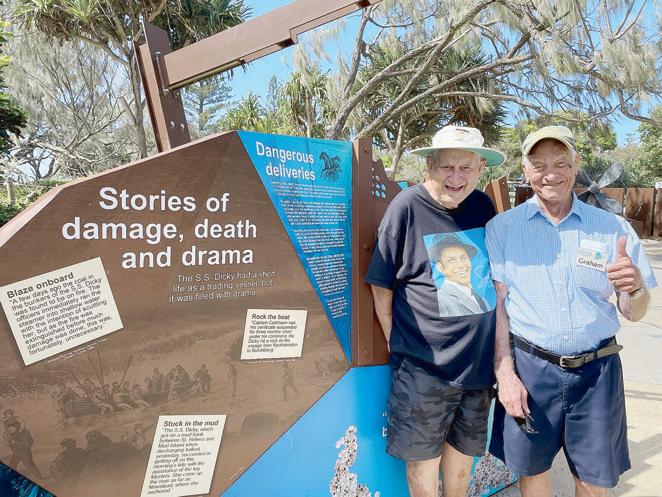
The rich history of an iron-hulled
steamer, driven ashore during a cyclone in 1893, lives on in a new seaside park.
Inspiring our youth and taking many back in time, the 129-year-old S.S. Dicky wreck has been immortalised and now on display in an interpretive installation for our community to enjoy.
The ‘barnacle wall’ features restored wreck pieces, artefacts, lifebuoy, replica bell, and stories of locals inspired by the S.S. Dicky.
Sunshine Coast Council’s Liveability and Natural Assets Group Executive Bill Haddrill said these impressionable works were the final piece of the Dicky Beach Precinct Plan.
“It’s great to see the finishing touches completed ahead of the school holidays for everyone to enjoy,” Mr Haddrill said.
“The wreck’s significance to the local area will continue to live on and serve as a really fun way to share the memories and history of what the S.S. Dicky meant to our community.
“Come and take a look at the interpretive elements and ship pieces featured on the viewing deck, which has direct line of sight to the location of the grounding.
“This second stage of works complements the first with connecting pathways, improved beach access, custom furniture and seating which encourages locals and visitors to grab lunch from the nearby shops, or just spend time outdoors.
“Earlier upgrades include the new skate park and major upgrade of the beachside park, including S.S. Dicky propellor relocation, new and improved community facilities such as the public amenities, connecting pathways, a new picnic shelter and beach showers.
“With the finishing touches completed, it has become a really inviting and welcoming space for locals and visitors to enjoy with something for all ages and abilities.”
the community not only because they are fun, but they encourage climbing, jumping, swinging, running, balancing and avoiding obstacles.
The council is now installing two additional toilets, with one being an accessible toilet with adult change and hoist. This will bring the total number of toilets to three. They are also exploring installing Wi-Fi, which would help younger visitors to be contactable by their parents and guardians with ease.
Beyond that, work will begin with the South Australian Parkour Association who will be delivering training workshops on-site (expected around April onwards), and council will also be installing stickers with QR codes linking to videos with parkour demonstrations of various skills to help people learn more about parkour.
Other plans may involve exploring scooter workshops and the possibility of hosting an Australian Scooter Association qualifier event, with the potential for food trucks to set up onsite during these busy periods.
Local Graham Smith said he was pleased to see the S.S. Dicky’s heritage on display.
“I think it’s a job well done!” Mr Smith said.
“Colin White and I were strong advocates for the precinct upgrade since 2013 and were on the S.S. Dicky Taskforce to ‘bring the bell home’.
“It was a great achievement to find the original bell and to now have its history on display alongside the replica bell is great.
“It’s a dream come true to see the heritage ring on at Dicky Beach.”
The upgrade is a welcome addition to the Dicky Beach Coastal Pathway upgrade which aims to better connect locals and visitors to the park and with businesses across the street, the Dicky Beach Holiday Park, beach and surf lifesaving club house.
Wollondilly Shire Council hosted the inaugural Wollondilly Tourism Connect event on Wednesday 20 March at Razorback Ridge Wines.
It was a successful evening of networking, sharing ideas, learning about available services, and supporting Wollondilly’s tourism businesses.
Guest speakers included representatives from Destination NSW, South West Sydney Tourism Taskforce Inc NSW, Service NSW Business Bureau, Camden Valley Inn, Wollondilly Tours, Wollondilly Performing Arts Centre and Visit Wollondilly; with Razorback Ridge Wines providing an introduction on how their winery came to life.
Tourism Connect builds upon the foundation created by the Wollondilly Tourism Association, that established a successful series of Tourism After Five networking events in recent years. With the Wollondilly Tourism Association stepping down from hosting the After Five events, Mayor Matt Gould thanked them for their contribution.
“I would like to thank the Wollondilly Tourism Association for all their hard work in advocat-
ing for tourism in Wollondilly over a number of years,” he said.
“We are delighted to be able to continue these events under the banner of Tourism Connect. Here in the Wollondilly Shire we have extraordinary natural beauty, vibrant heritage in our towns and villages, and fantastic tourist and visitor attractions to complement these assets.
“It is fantastic to have a new tourism industry event in Wollondilly, to bring the business community together to support each other, learn about each other’s businesses and visit new venues across the Shire.”
The next Tourism Connect event will be held in July, with more details to come. Interested community members can follow Business Wollondilly’s Facebook page and sign up to the fortnightly e-newsletter to stay in the loop on business news, events, support, opportunities and more.
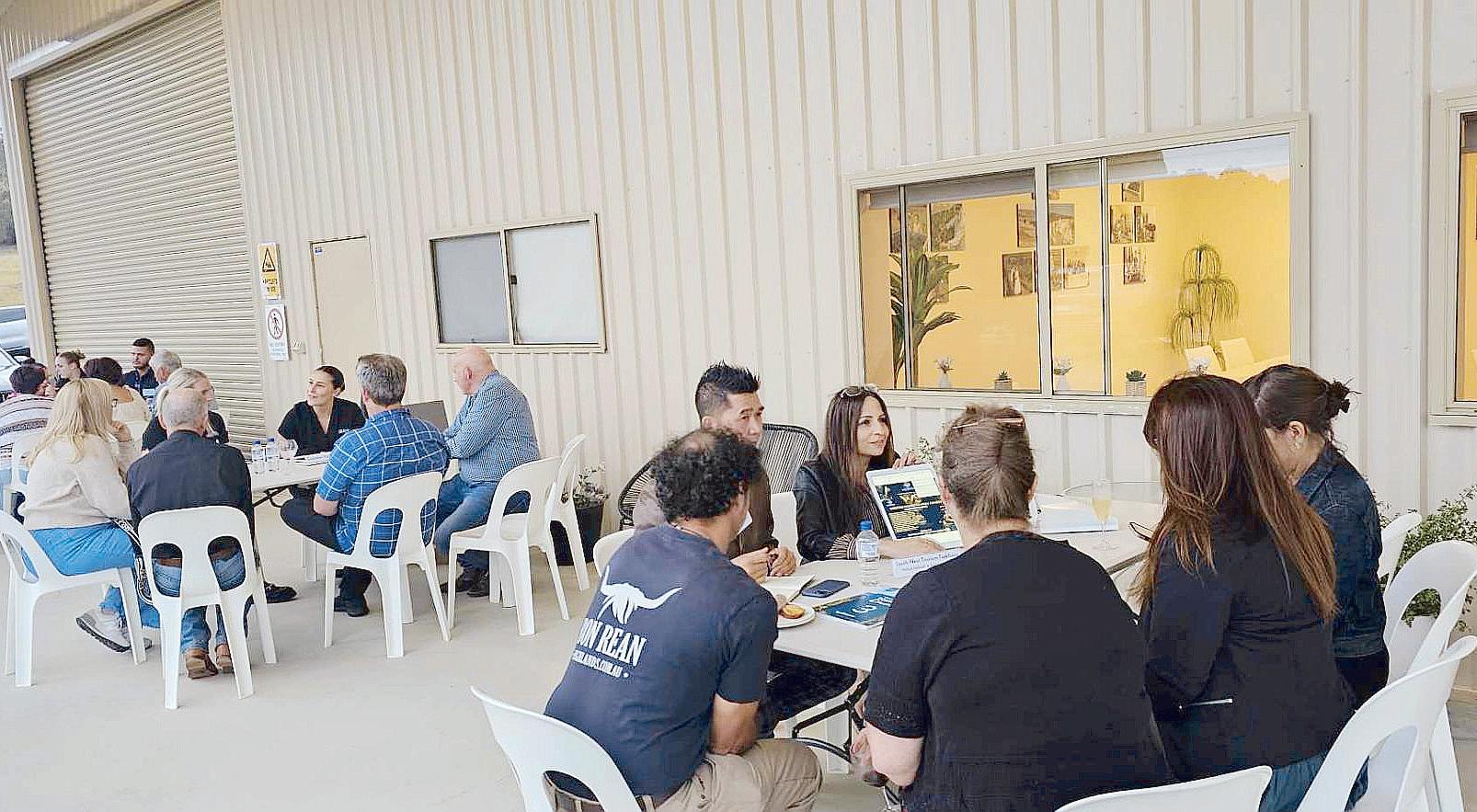
Anglesea community members, McMillan Street precinct user groups, key interest groups and Surf Coast Shire Council will come together to help co-design the future of the Anglesea Community and Health Hub.
Following an expression interest process, 39 people representing a range of voices have been offered a place on the community codesign group.
This comprises: 12 precinct user group and key interest group representatives and 27 community member representatives.
The council received more than 60 applications as part of the expressions of interest process.
The participants will take part in a series of facilitated workshops during April and May to discuss how the precinct can be improved to meet the needs of community and service providers.
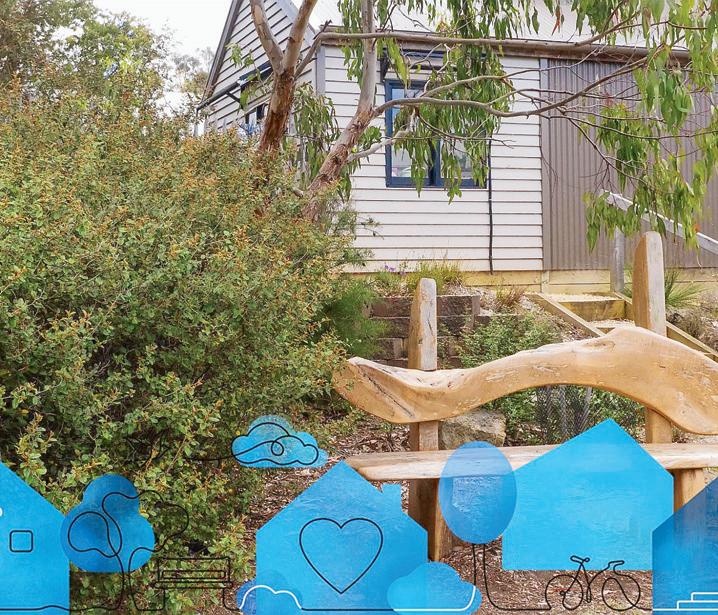
They will consider the work done to date and the feedback received, and develop a draft concept plan that will be shared with the wider community for feedback. The draft concept plan will then be presented to Council by the middle of the year.
The 27 community member representatives from the expression of interest process
The Dwellingup General Store has been revamped by new owners and includes an incredible mural by internationallyrenowned Perth artist, Kyle Hughes-Odgers.
The bold artwork is a narrative-based work inspired by the natural environment in Dwellingup – the Munda Biddi Trail, flora, fauna and human interaction.
The refurbishment was supported by the Shire of Murray’s Facade Refurbishment Program, designed to help revitalise Pinjarra and Dwellingup Town Centres.
Murray Shire President David Bolt said the program was an initiative that supports the Council’s ‘Place’ aspiration in their Council Plan to ensure the rural charm is preserved while they grow by embracing innovative urban design ideas.
“The program aims to support and assist landowners and local business owners with revitalisation and activation of the of Pinjarra and Dwellingup town centres to create active, vibrant, attractive and safe places for our community and visitors to enjoy,” Shire President Bolt said.
As an incentive to encourage landowners and local business owners to upgrade their building facades, the program will offer successful applicants the opportunity to receive a matched 50 per cent financial contribution of eligible works to a maximum value of $20,000 to put towards works that will improve the visual appearance and assist with activation of the two town centres.
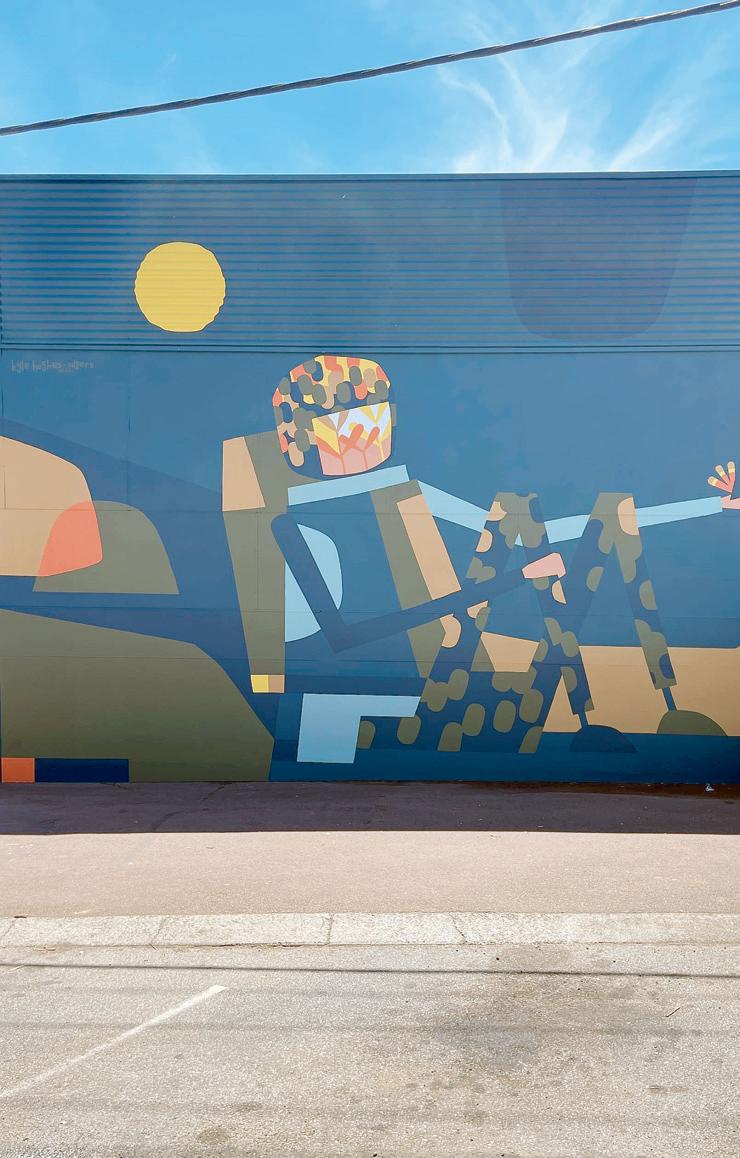
were chosen at random from a series of demographic categories, such as age, gender and housing tenure.
Precinct user groups (such as Anglesea Medical Clinic, Barwon Health, Anglesea Community House and ANGAIR) and key community interest groups (Preserve Anglesea Community Hub, Business Anglesea, Housing Challenge 3230 and Anglesea Community Network) were invited to each nominate one representative. Twelve places were allocated for these representatives.
Surf Coast Shire Mayor Cr Liz Pattison said the community co-design group would bring together a diverse range of community voices.
“This is a really exciting, once-in-a-generation project that will set a course for the precinct for the coming decades, leaving a lasting legacy for Anglesea, so it’s vital that
we work hand-in-hand on this.
“The community co-design group comprises a range of ages, genders, life experiences, housing tenure and ways people are connected to the precinct so that we can hear all sorts of community viewpoints.
“I look forward to seeing the draft concept plan this group comes up with.
“I know the McMillan St precinct is a place the Anglesea community cares deeply about and we want everyone to be involved, so there will be another opportunity for the wider community to have a say.
Everyone will have a chance to provide feedback on the draft concept plan in the coming months.”
To stay updated on the project, including progress of the community co-design workshops, go to surfcoast.vic.gov.au/AngleseaHub
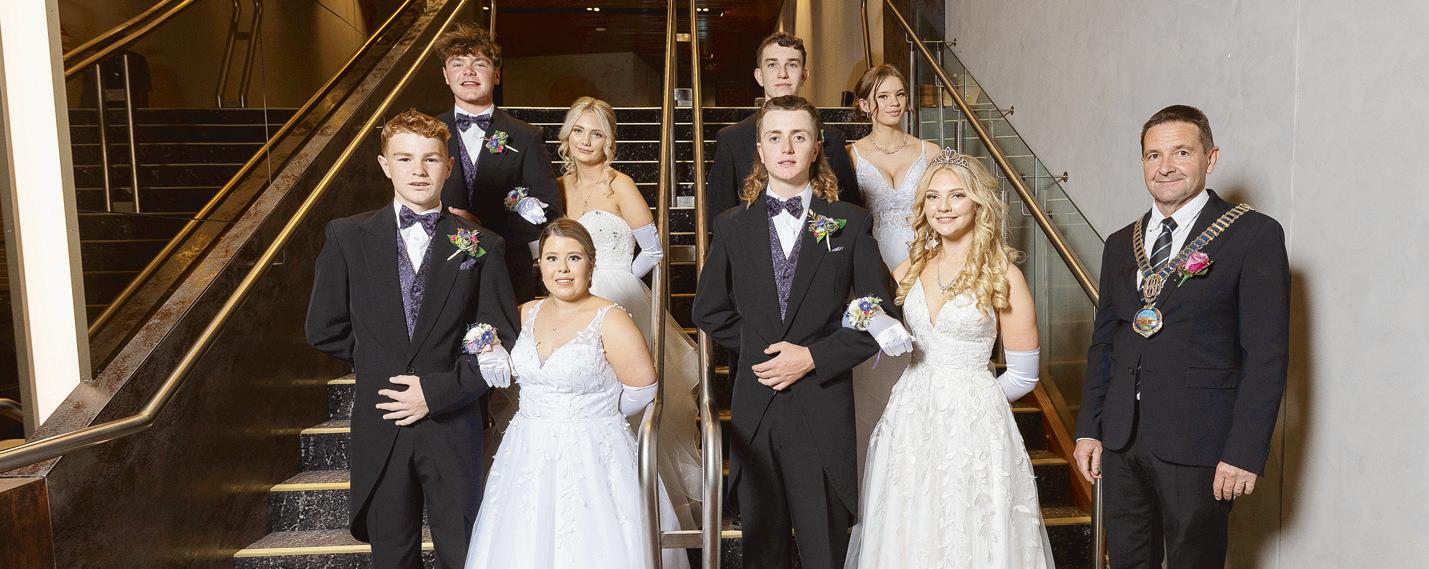
Nominations
The Civic Ball is one of the longest-running debutante balls in Australia, and will be held on Friday, 18 October.
Debutantes will have a little more time than usual to prepare for this year’s event, which is being held later in the year due to the 2024 Local Government Elections.
Mayor Tom Kennedy said he hoped to see plenty of young locals take the opportunity to enjoy a glamorous night out.
“This is such a wonderful tradition for Broken Hill, and always makes for a spectacular and elegant event for debutantes
and their families and friends,” he said.
“We always get a great mix of entrantsfrom young ladies who are the first of their family to make a debut, through to participants who are following on a family tradition from their mother or grandmother.
“It really is an occasion for the whole family and can provide memories for generations.
“I’d encourage all young ladies who are interested in making their debut to submit a nomination by Friday, 24 May.”
Busselton Margaret River Airport was abuzz with Jetstar’s inaugural flight service between Sydney and Busselton taking off on 26 March.
The new direct flights between Busselton and Sydney, coupled with Jetstar’s Busselton –Melbourne service is a major drawcard and boost for tourism in the South West region.
Both services will open the doors for interstate and international business and leisure travel, as well as bolstering the City’s identity as the ‘Events Capital of WA’, with further opportunities and connectivity between Busselton and the east coast.
City of Busselton Mayor Phill Cronin said on the day: “It was wonderful to experience firsthand the level of excitement and activity at the airport today. Whilst greeting passengers who arrived on the flight today, it was fantastic to hear their positive comments and experience on the new direct commercial flight service.
“Jetstar’s Melbourne service has proven to be incredibly popular and if today is anything to go by, I am sure Sydney will follow suit.
“I thank Jetstar for their commitment to the region and for their commitment to bring the Sydney flight service to Busselton.
“The additional passenger service ticks all the boxes for connectivity, job creation and driving economic growth. The community can only grow in strength from here.
“This is an important milestone for the City of Busselton and the State. I must acknowledge the support we’ve received from both the Federal and State Government, through Tourism WA and the South West Development Commission.
“We are also thankful for the contribution and support we’ve received from neighbouring Local Governments.”
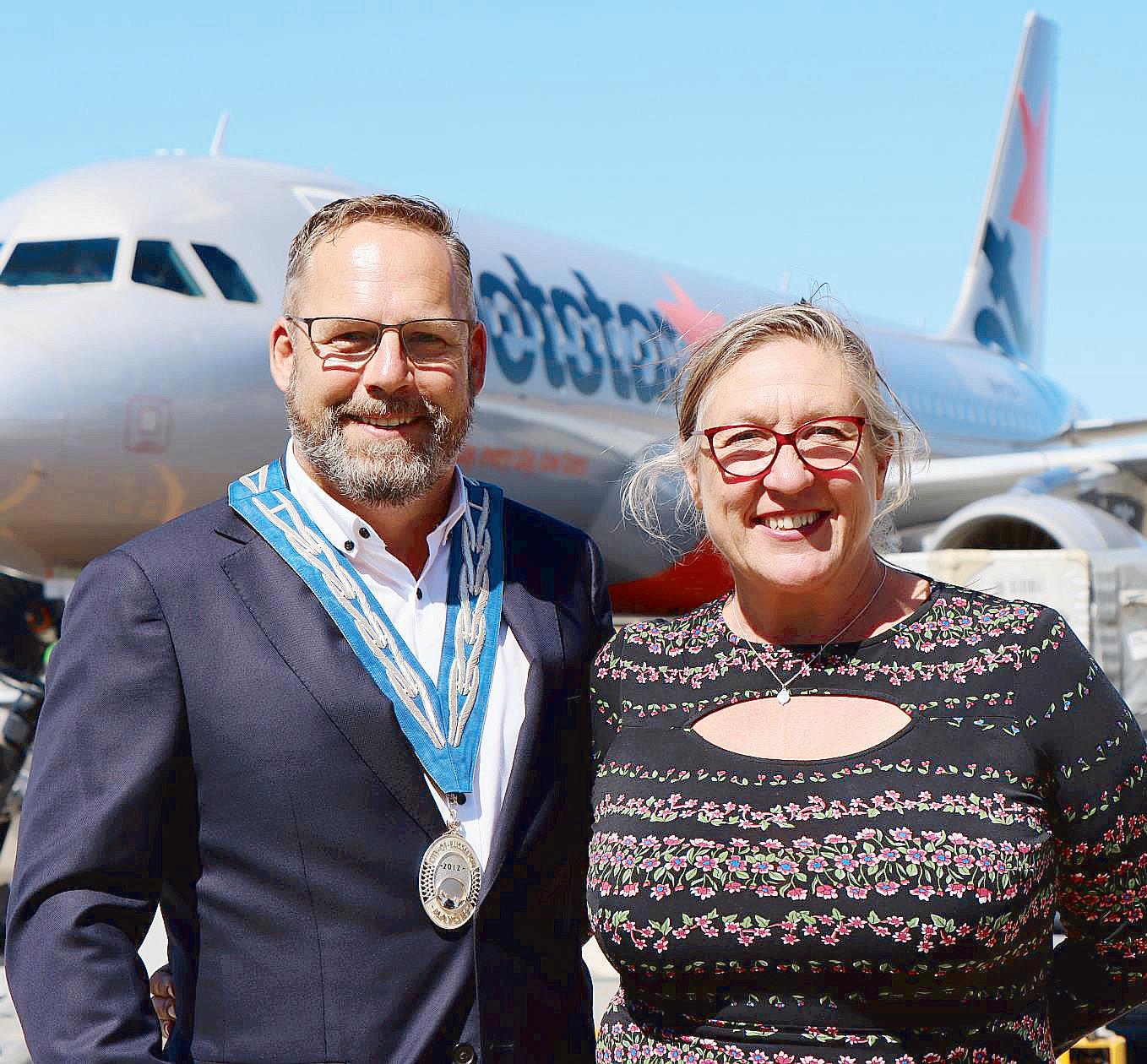
Kyogle
Council electors will be asked in a referendum whether or not they want a popularly elected mayor.
The referendum will be held in conjunction with NSW State-wide Local Government elections on Saturday, 14 September.
A popularly elected mayor is elected by voters and serves a four-year term. Currently, Kyogle Councillors elect the mayor from amongst themselves and the mayor serves a two-year term.
Council resolved in April 2022 to conduct a referendum on having a popularly elected mayor, with councillors indicating at the time they wanted to maintain a system of wards and the current number of councillors (nine).
With the local government election to be
held this year, the Council at its 11 March 2024 meeting decided the question voters will be asked at the referendum. It will be: Do you favour the election of the Mayor by electors for a four-year term with the number of wards reduced from three to two, each ward comprising of four councillors, plus a popularly elected Mayor?
Currently, Kyogle council has three wards, with three councillors in each ward and the mayor elected by councillors from among themselves -- making a total of nine councillors.
However, if the council is to have a popu-
larly elected mayor and still have a total of nine councillors, voters will have to elect a mayor and eight councillors (making a total of nine).
As there must be an even representation of councillors in each ward, the council is proposing to reduce the number of wards to two and have four councillors elected from each ward.
As well as deciding on the referendum question, the Council at the March meeting endorsed an information pamphlet to be made available to voters which outlines the pros and cons of a popularly elected Mayor.
Collections of braille books for children with blindness or low vision and memory books for people living with cognitive impairment are now available from Snowy Monaro Regional Library branches across the region, expanding the range of accessible resources available to local residents
Accessible collections are part of the library’s mission to make lifelong reading and learning available to everybody in the Snowy Monaro, providing books and learning resources in a variety of formats to meet the diverse needs of our community.
Memory books are especially designed for older readers and to assist those with cognitive impairment, dementia, or who are recovering from stroke and other forms of acquired brain injury.
These titles pair larger type with pictures and easy-to-understand stories, aiding in treatment, condition and symptom management, and help to boost quality of life for these readers.
“The popularity of our large print, dyslexic font and home library options show that there is strong demand in our region for all kinds of accessible reading materials,” said Library Coordinator Cheryl Smith.
“With the addition of these two new collections to our already-popular range of accessible titles, Snowy Monaro Regional Library is ensuring that everyone in our community can enjoy reading and learning in a format that works best for them.”
The new junior braille book collection features many popular children’s titles, each leant out alongside a braille learning kit with magnetic mat to help vision-impaired children and their families learn braille.
With family favourites like Maurice Sendak’s ‘Where the Wild Things Are’ available now at library branches, this collection is a vital resource for parents to help ensure that vision impairment is no impediment to their child’s literacy and overall development.
These new collections join existing accessible options available at library branches across the Snowy Monaro, which include talking books, and titles published in large print
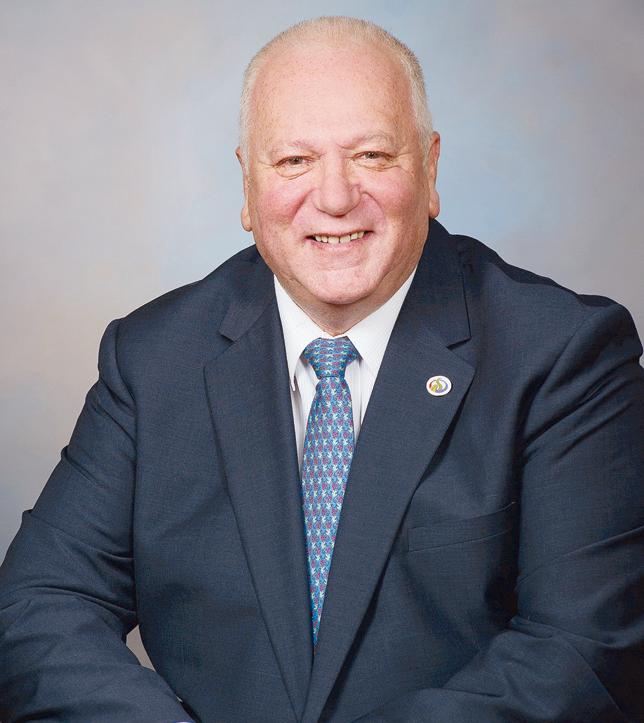
Vic Pennisi was not returned following the 2024 Local Government Election but was full of gratitude and thanks following his election loss particularly for the council staff.
Melissa Hamilton is set to be sworn in as the new mayor this month.
“It is with a heavy heart that I pen these final words as Mayor of Southern Downs. I bear no malice towards anyone in relation to the election result of 16 March 2024,” he said.
“This is democracy at work and the people have spoken. I wish the successful candidates all the best going forward and I hope that they collectively deliver good governance to the people of Southern Downs.
“I am also confident that other candidates who have not been successful in this election will find new opportunities going forward to continue the good work they have started in Southern Downs - I too am looking forward to new endeavours.
“I wish the new Mayor a successful future at the helm and I hope that she finds the same rewards that I have been blessed with during my tenure as Mayor of Southern Downs. For me, the journey as Mayor was amazing and I am deeply proud of what Council achieved during my term.
“I have many fond memories of the 20 years I have been an elected representative and I thank the people of Southern Downs for their trust and support. I have given with good intent to the communities in Southern Downs, sometimes at the cost to my family.
“The future for me is bright and will give me more time to reconnect with family and friends.
and dyslexic-friendly fonts. Available in-library and through the Mobile Library service, these accessible collections are a significant part of Council’s home library service.
The home library service in particular is a key part of Snowy Monaro Regional Library’s commitment to accessibility and equitable access, providing books and library services to people who can’t easily visit the library due to their health, age, ability, or mobility.
User numbers for the home library service increased significantly in 2020 during the covid-19 pandemic, with lockdowns and restrictions helping to raise wider awareness about the program.
Many residents continue to take advantage of this more accessible way of accessing library services, and current usage rates remain well above their pre-pandemic levels.
“It would be remiss of me not to recognise the great staff at Southern Downs Regional Council that I have been fortunate to have worked with along the way.
“We have a dedicated workforce, beginning with the front counter staff, all the way through to our outdoors crew and office staff. I would like to extend a special thank you to CEO Dave Burges for his counsel and I owe a huge debt of gratitude to the Directors and Managers who have given the direction and information needed to make the big decisions.
“My sincere thanks also to the great media team who I worked closely with. To the Personal Assistants to the Mayor and Councillors, you have been the shining light each and every day.
Thanks for all the memories Southern Downs and God Bless you all. What a great place to live, work, play and stay.”
Bathurst’s historic Begonia House opened on Tuesday 19 March with the 2024 begonia display in full bloom.
“Council’s horticultural staff take pride in preparing the display each year. It’s a labour intensive but rewarding project the staff take on annually to create the stunning display.
“The begonias have a seven-month growing period, growing from a tuber. The plants are repotted twice during the growing season, with the final repotting into the display pots that visitors will see.
“The display in Bathurst’s Begonia House is only one of a handful of large public garden begonia displays in Australia,” Cr Jennings said.
The Begonia House is open Monday to Friday between 9am and 4pm and on weekends from 11am to 3pm. The display is expected to run through until the end of April.
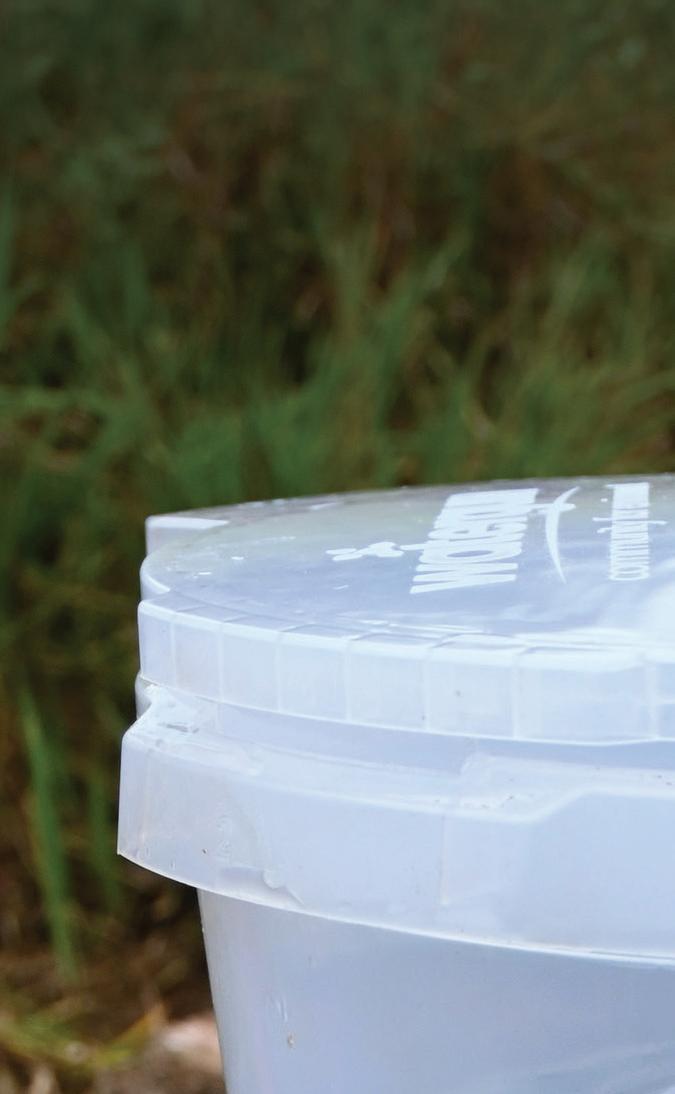
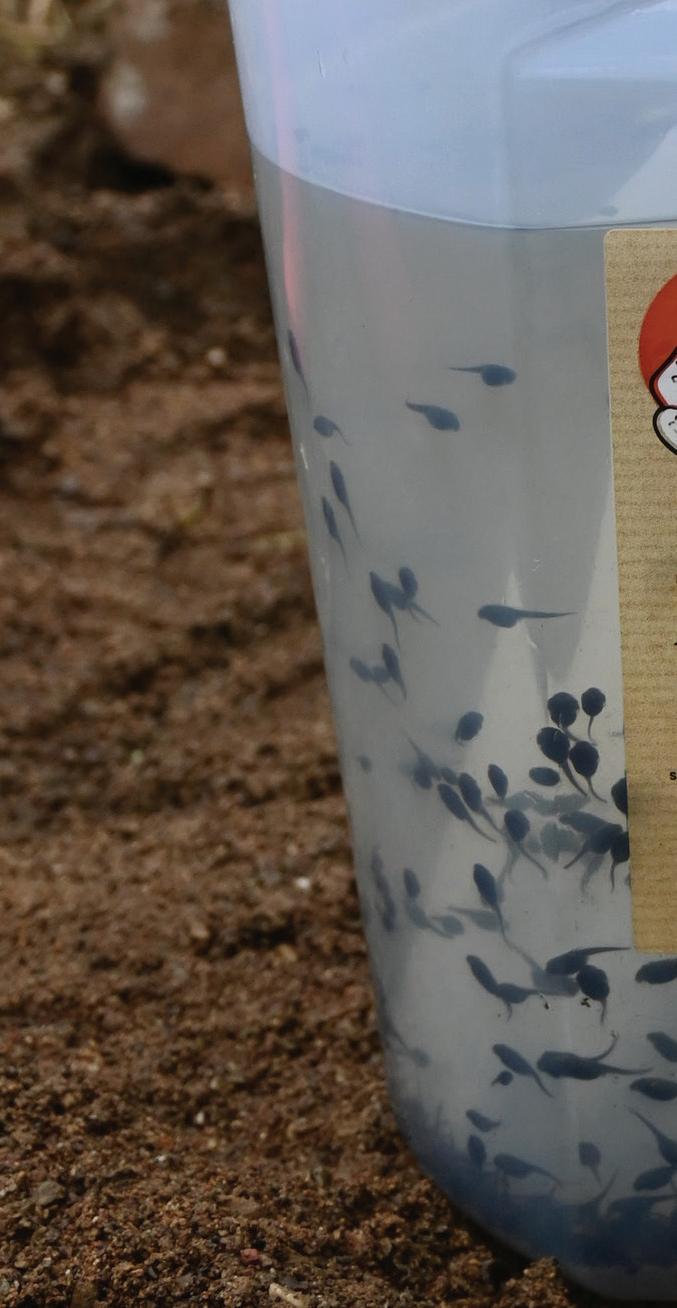
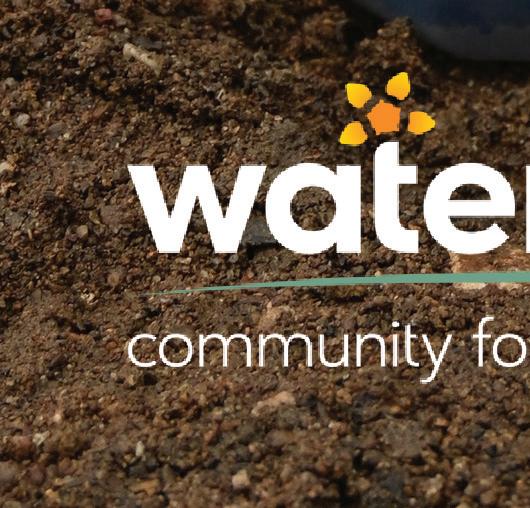


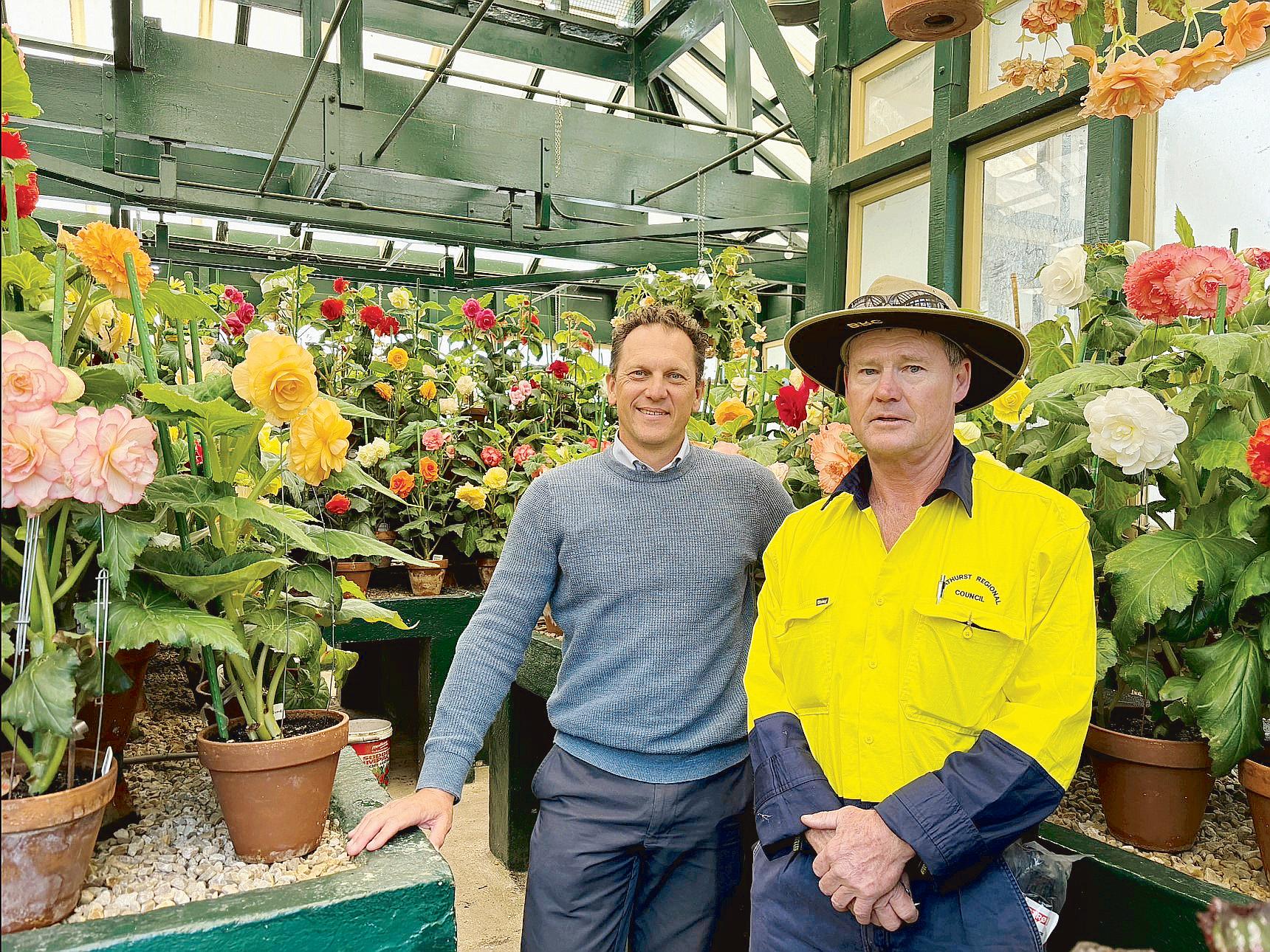


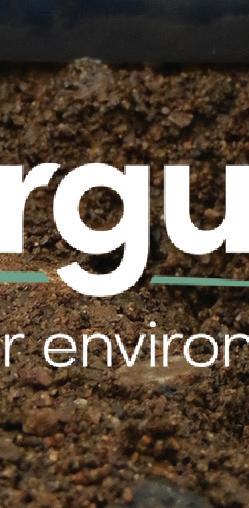

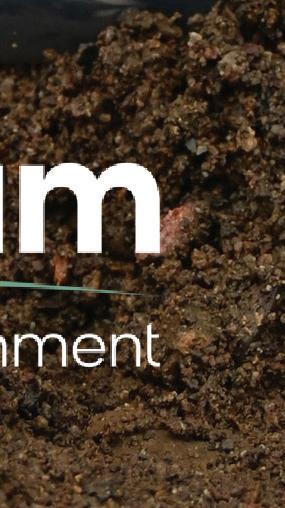






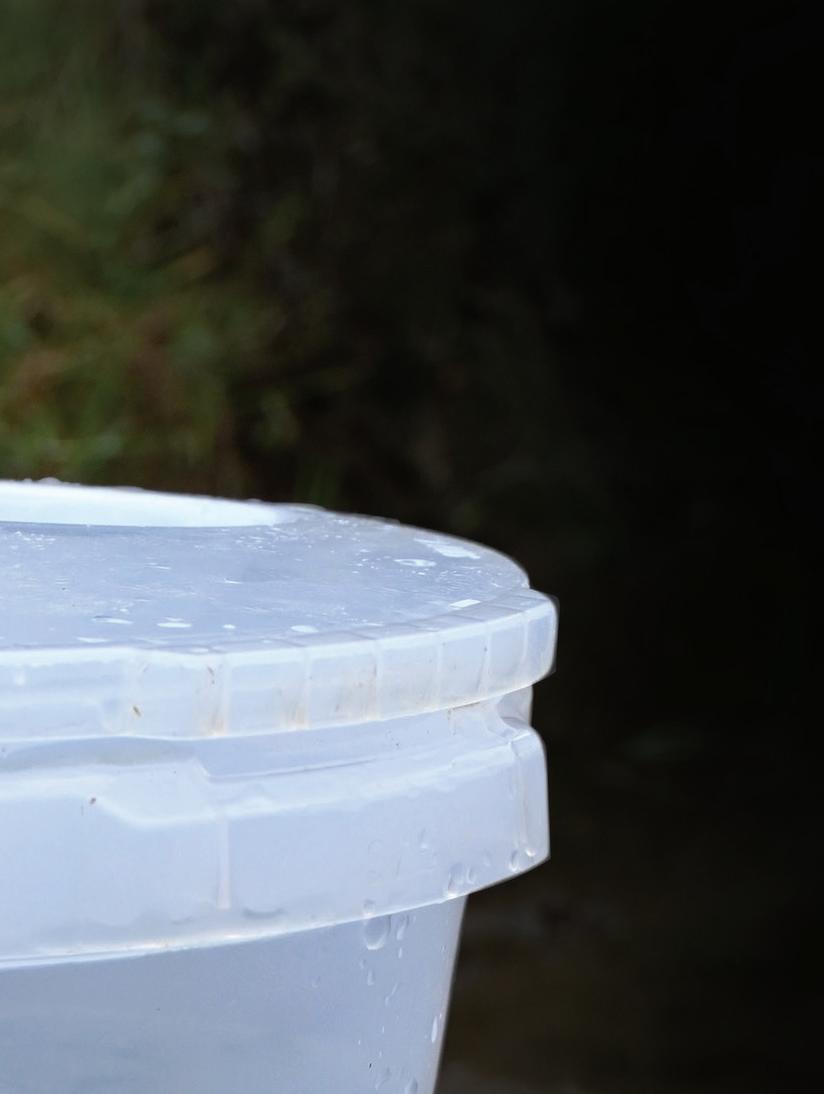

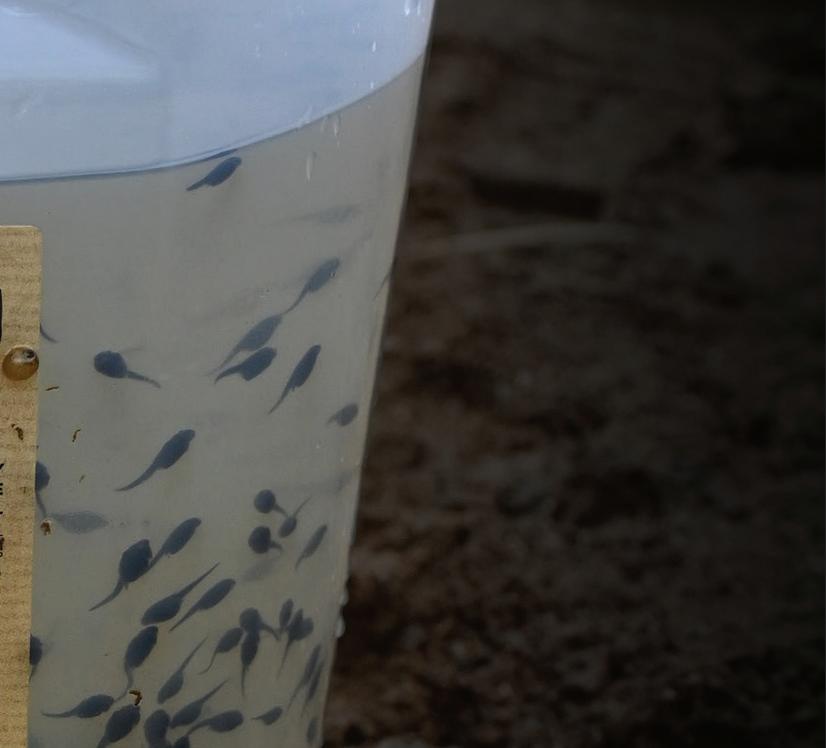

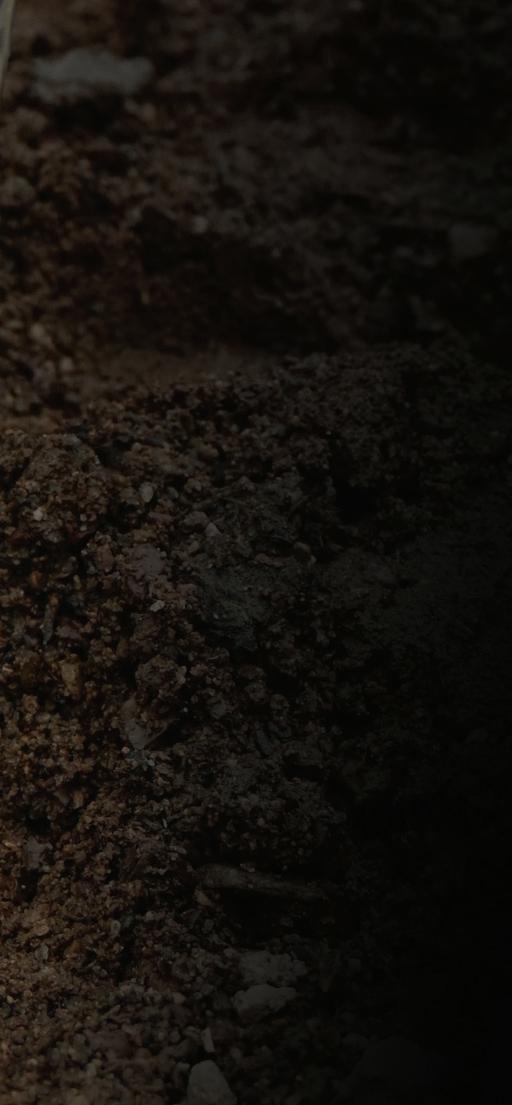

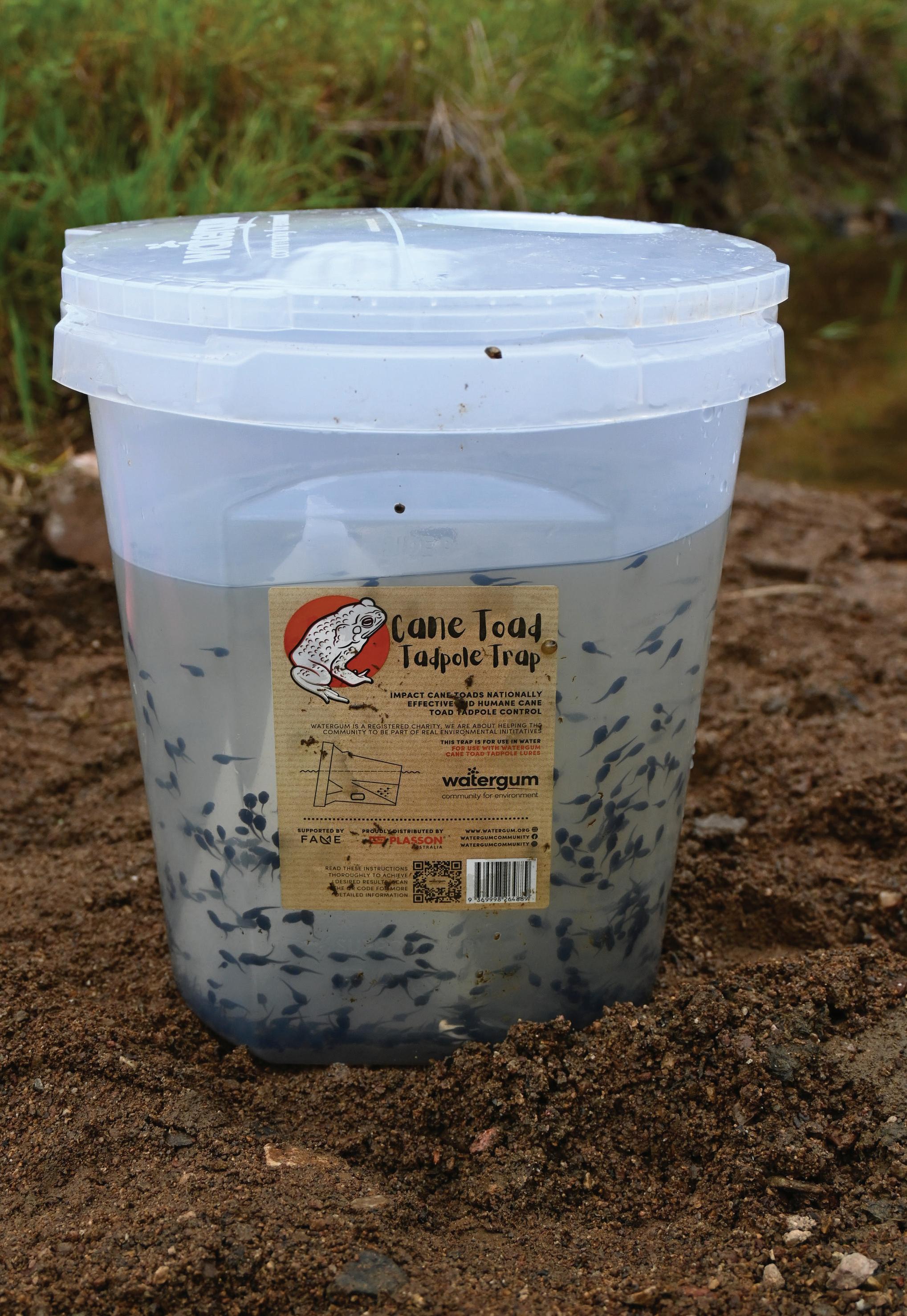






















Work is set to begin on the exciting $16.2 million transformation of Cockburn ARC.
The ARC Evolution, a partnership with Fremantle Football Club, will deliver significant improvements to the ARC Health Club and Dockers facilities.
Scheduled for completion in early 2025, the partnership project will enhance services for the community and members.
City of Cockburn Mayor Logan Howlett said the project would continue to meet the City’s vision to make Cockburn the best place to be, supporting the community to thrive by providing inclusive and sustainable services that reflected its aspirations.
“This project is not just about expanding services, it’s about enhancing lives by providing facilities with considerable social and health benefits,” Mayor Howlett said.
“The city provides world-class recreation facilities to our residents, so they can enjoy places to exercise, socialise, connect and have fun.
“This evolution will expand opportunities for residents and visitors to join exercise classes, participate in mind, body, and wellness sessions, and work-out in an award-winning gym.”
Mayor Howlett also said it was exciting to embark on another partnership project with the Dockers, a further example of the success of a Memorandum of Understanding signed by the two parties in June 2023.
“Our partnership with the Dockers is designed to help expand successful communityfocused opportunities that improve the lives of local families and I’m confident this project will do all that, and much more.
“The expansion project will benefit girls and women who will have dedicated changerooms to help promote their active participation in football and other community activities at this world-class venue.“
The city will fund $9.6m of the project to deliver a revamped ARC Health Club experience, including: increased gym floor space to 1,500m2, increased Mind and Body Studio to 250m2, relocated and upgraded Group Fitness and Indoor Cycle Studios, conversion of administrative spaces to expand the gym.
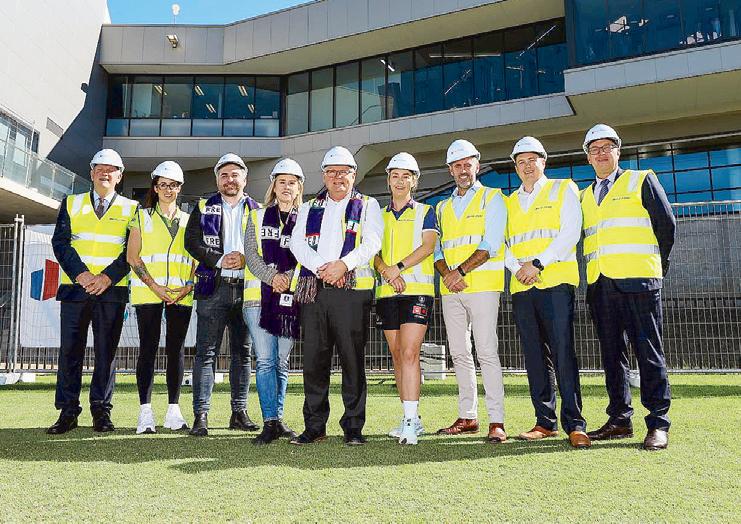
From
Fremantle Football Club and the AFL will provide $3.15m, the State Government will contribute $2.5m and the WA Football Commission has provided $350,000.
These new facilities will include: state-ofthe-art AFLW changerooms, changerooms to support community sporting programs, an undercover 250-seat spectator terrace, a multipurpose function space to support education and community programs.
“This development is a reflection of our commitment to fostering a deep connection with our community and supporting the growth of Women’s Football at all levels,” Freemantle Football Club Chief Executive Officer Simon Garlick said.
“By partnering with the City of Cockburn, the AFL, the State Government, and the WA Football Commission, we are investing in a future where our Club and our community can grow together.
“This project is a pivotal part of our strategy to enrich and inspire our purple army and the broader community.
Development of connected, safe and green corridors for walking and cycling that also help cool the city; phasing out the use of fossil fuels in Council operations; and providing public spaces for use during extreme climate events - these are some of the recommendations to come out of the City of Hobart’s inaugural Climate Assembly.
The City of Hobart’s Climate Assembly is a Tasmanian first and a pivotal event in shaping Council and communities’ response to the climate and biodiversity emergency.
The assembly participants, selected through a widely advertised expression of interest process, to represent the diversity of Hobart.
The assembly group were a representative sample of the Hobart population in terms of age, gender, cultural background, and climate change knowledge.
The Assembly, held over four days across two weekends, was a forum for indepth briefings, robust discussions and collaborative decision-making.
It resulted in ten prioritised community recommendations aimed at addressing the urgent challenges posed by climate change and biodiversity loss.
Reflecting on the significance of the Assembly, Hobart Lord Mayor Anna Reynolds said, “Climate change is the most significant issue of our generation and will impact all of our lives in some way.
“The only way to reduce the impact this is for everyone to work together and cut the
The Hills Shire Council will trial an expansion of its E-Waste recycling program, doubling its frequency to twice a year.
Every year, Council hosts an E-Waste recycling event at Castle Hill Showground, drawing in thousands of residents eager to dispose of their unwanted and broken electronic devices responsibly.
The most recent E-Waste event took place on Saturday 2 March where residents were also given the opportunity to recycle textiles, polystyrene, and plastics as part of a trial.
More than 1500 cars were recorded at Castle Hill Showground, unloading an estimated 45 tonnes of e-waste and hard plastic, four tonnes of textiles, 100 cubic metres of polystyrene, and 75 cubic metres of soft plastics.
The Hills Shire mayor Dr Peter Gangemi said the results were incredible and showed residents’ commitment to recycling their unwanted electronic goods and other waste.
“This is a big win for the environment,” Mayor Gangemi said.
“The opportunity provided by this program to responsibly dispose of e-waste is invaluable, and I’m grateful for everyone’s commitment to protecting our environment.
“Each recycled item means less waste to landfill and promotes a healthier planet.
“I have been proud to lead the initiative for a second E-Waste event in The Hills and I believe our residents will make the most of this opportunity to do more for our environment.”
The second E-Waste event is scheduled for the second half of 2024.
The Hills Shire Council also participated in Clean Up Australia Day on Sunday 3 March.
Residents, Council and community groups including the RFS, volunteers from the Community Environment Centre at Annangrove and Hills Youth Army collected approximately 11 bags of rubbish at Caddies Creek Park Reserve in North Kellyville.
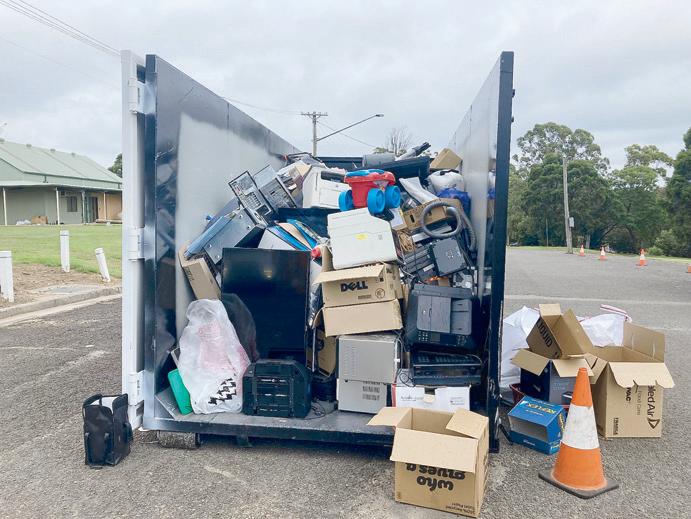
E-waste pick up.
General waste, such as cigarette butts, takeaway coffee cups, batteries, polystyrene, rubber bands, plastic drink bottles and much more, were collected on the day.
Some of the more interesting items that were removed from the site included a shopping trolley, plastic chair, motorbike boots, a bicycle, rope, and a gridiron ball.
“I’d like to express my sincere gratitude to everyone who joined me at Caddies Creek Park Reserve for Clean Up Australia Day,” Mayor Gangemi said.
“The dedication and work of our volunteers was outstanding.
“This year, we directed our efforts towards preserving our waterways, especially following the exciting discovery of platypus inhabiting local rivers and creeks. We were fortunate to have the expertise of the wonderful Dr Michelle Ryan from Western Sydney University, who delivered an insightful talk on the significance of maintaining pollution-free waterways, especially to protect the platypus.”
Clean Up Australia Day is an annual event that encourages communities to protect the environment by cleaning up their local areas. The event has been inspiring people for over 30 years.
The $44.5 million Gipps Street Recreation Precinct project is proudly funded by the Penrith City Council and the NSW Government who are contributing a combined $13.5 million through the Western Sydney Infrastructure Grants Program ($7 million), Multi-Sport Community Facility Fund ($5 million), Greater Cities Sport Facility Fund ($1 million), and the Places to Play Program ($500,000).
pollution that’s causing such rapid change to our world.
“The Hobart Climate Assembly has given us the clear direction on what the community would like to see us do in Hobart, and what we can do together.
“Many climate change initiatives also have extra benefits such as reducing energy costs, creating new job opportunities, and creating cleaner air.”
Rahat Md Imadul Islam, a business owner, father, and community volunteer from Lenah Valley, said Hobart residents could all positively impact on climate change.
“We are short-term guests in this lovely world,” he said.
“We wouldn’t like a guest who doesn’t look after a generous host.
“The assembly opened our eyes to the facts and inspired us to become better guests in a planet we call home.”
The recommendations put forth by the Assembly encompass a wide array of actions aimed at mitigating the impacts of climate change and enhancing community resilience.
Penrith Mayor Todd Carney said this was a fantastic opportunity for local sports groups to be the first to use the landmark facilities.
“The Gipps Street Recreation Precinct will be like nothing we’ve ever seen in Penrith before and the sports facilities on offer are expected to attract a wide range of local, regional and even statewide competitions and events,” Cr Carney said.
“These facilities are designed to accommodate all kinds of different sports from football, netball, cricket and everything in between, so I encourage all of our local sports clubs and organisations to apply.”
The first allocations for usage will be for the 2024-2025 Summer Season and 2025 Winter Season.
Chief Executive of the NSW Office of Sport Karen Jones said the NSW Office of Sport is investing in new and upgraded multi-sport facilities to provide more opportunities for people of all ages and abilities to play sport and be healthy and active.
“The Gipps Street Recreation Precinct will provide one of the best community sports precincts in Sydney and we welcome the commencement of the expression of
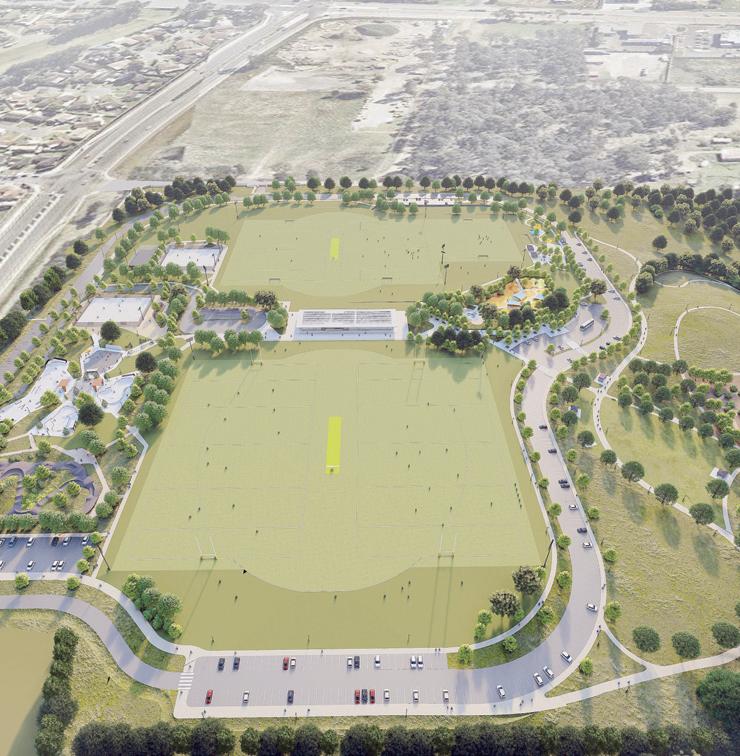
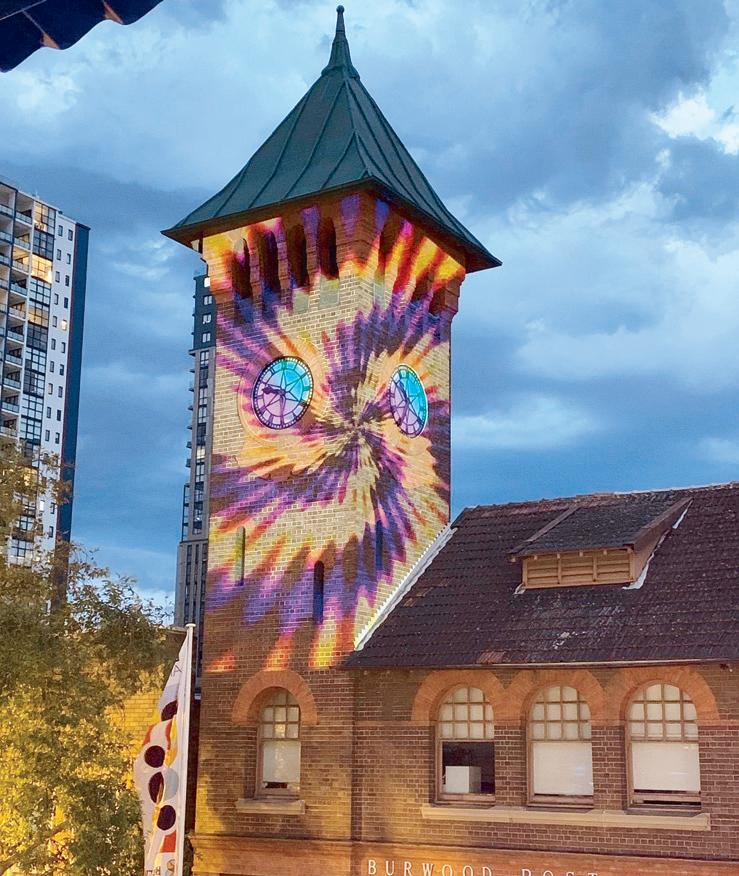


On Saturday 6 April 2024, Burwood hosted a grand street party filled with music, food and entertainment offering the community the opportunity to celebrate its 150 year history and bright future.
This event is part of a series of celebrations throughout 2024, marking 150 years since the municipality’s establishment on 27 March, 1874.
Held on Burwood Road, the street party took revellers on a journey through the eras, and celebrated the diverse cultures that enrich the local community today.
Among the highlights were performances by 100 Glee Club Choir and community singers, who delivered an electrifying AC/DC tribute to Burwood’s notable former residents; George, Malcolm and Angus Young.
The Young brothers, known for their roles in AC/DC and The Easybeats, lived on Burleigh Street, a stone throw away from Burwood Road as teenagers.
The event will also featured the nostalgic Swing Katz; the soul-stirring melodies of First Nations artist Eric Avery; the lively Bridge Street Jazz Band; an electrifying open-air dance party with DJ Flygirl Tee; and dynamic K-pop and contemporary dance performances by Pinoy hip hop, DanceKool and the Maverick Dance Crew.
Adding to the festivities, attendees enjoyed delicious Asian cuisine from Burwood’s very own Chinatown, along with a traditional Korean drumming parade and fan dance, Ghana Road Show performance, market stalls and classic car display.
The evening concluded with a spectacular fireworks show at 9pm, symbolising the community’s historic achievements and promising future.
Burwood Mayor Cr John Faker said the street party was the council’s way of saying thank you to the community that had built, shaped and stood by Burwood through ev-
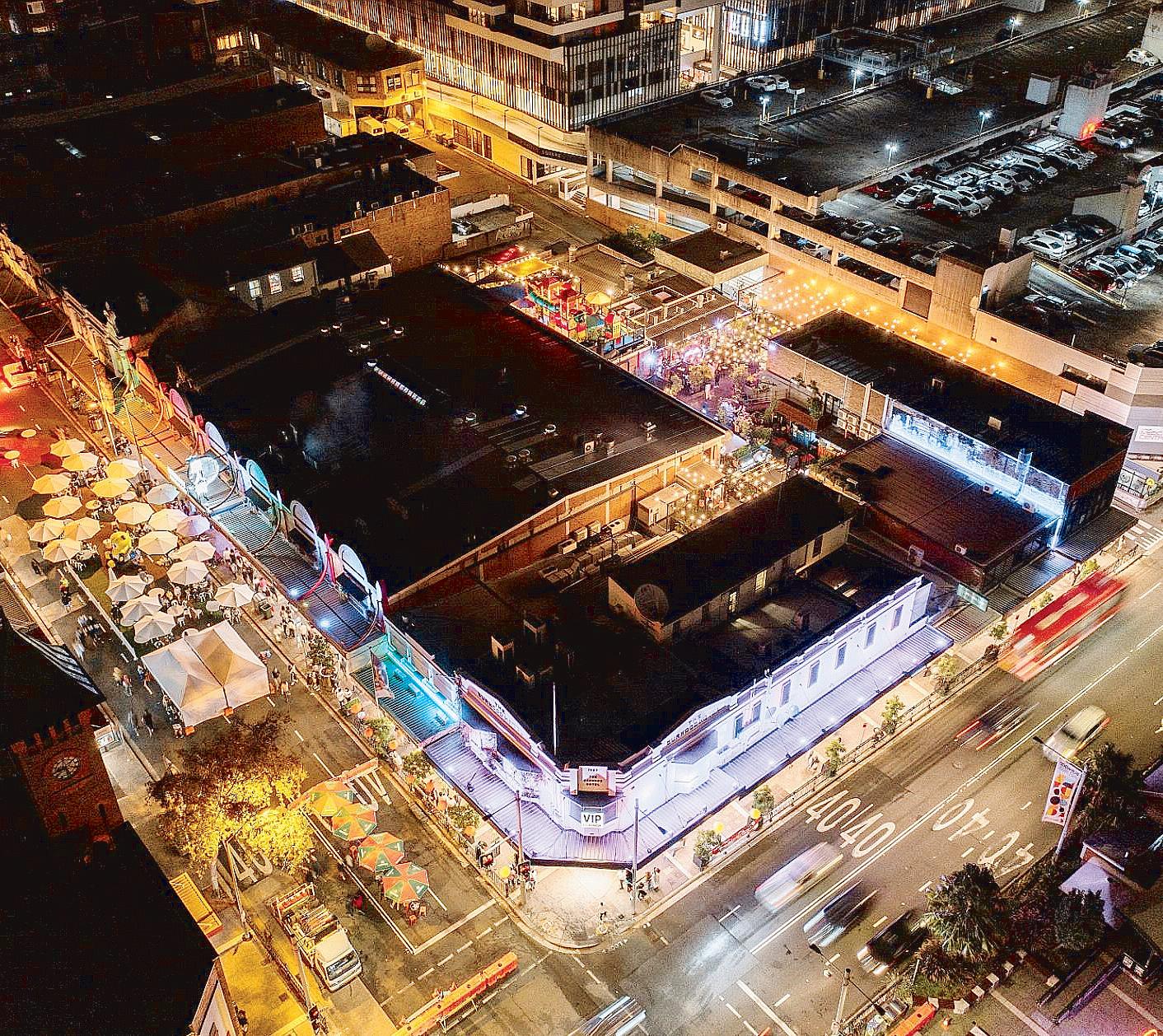
ery
its
“We were
to invite everyone to join us in this momentous celebration.”
Other planned events for the 150th anni-
Veitch officially opened a new outdoor plaza in Randwick on 4 April 2024.
Hundreds of community members attended the opening ceremony of the plaza, which is located on the corner of Waratah Avenue and Belmore Road in Randwick.
The new 260sqm outdoor space features terraced seating, tables, new trees and garden beds, and accessible pathways for prams and wheelchairs.
The idea for the plaza was first raised in 2014 as part of Randwick Council’s Light Rail Support Plan. The plan proposed a range of changes including two new public plazas in Kingsford and Randwick providing more space for people to compensate for the impact of light rail on the public domain. Following consultation in 2020 and 2021, construction commenced in mid-2023.
Randwick Mayor Philipa Veitch said:
“Providing new public spaces for people to gather in existing urban environments is rare. That’s why this new plaza is so important.
“It provides an addition to Randwick’s main shopping and dining hub, where thousands of people work and pass through every day.
“The new plaza means that residents and visitors now have access to an outdoor dining and leisure space right in the heart of Randwick. The space will not only benefit our community members but also our local businesses,” Mayor Veitch said.
NSW Minister for Planning and Public Spaces Paul Scully said the NSW Government provided $2.285 million for new landscaping, accessibility upgrades and seating areas in the new plaza.
“The new community plaza, located in the heart of Randwick, will be a great place for the community to come together to socialise and unwind in a relaxing setting,” Minister Scully said.
The NSW Public Spaces Legacy Program is an investment in high quality public open spaces. Together with the NSW Government, Randwick City Council is delivering vital infrastructure for communities to love the place they live.
Melbourne is embracing 24/7 cleaning and graffiti removal thanks to an innovative new cleaning contract - ensuring the city will always be looking its best for residents, workers and visitors.
Under the new Clean City Services contract, the City of Melbourne will prioritise the removal of offensive graffiti, cut down response times to one hour from the current two hours, and monitor graffiti hotspots daily. It kicked off on 1 April 2024.
Outgoing Lord Mayor Sally Capp said the City of Melbourne had more than doubled its investment in clean city services compared to 10 years ago – spending $97 million between 2021 and 2024.
“We’re supercharging our cleaning efforts like never before – with boots on the ground 24 hours a day, seven days a week,” Ms Capp said.
“A clean city is one our residents, traders and city workers can be proud of, which is why we’ve tripled our investment in cleaning services over the past four years.
“We know the best deterrent to crack down on repeat offenders is to remove graffiti as soon as possible.
“That’s why we’re taking our services to the next level to ensure our city is always looking its best.”
To keep Melbourne’s iconic laneways sparkling, targeted hotspot pressure washing will be improved in the busiest laneways – jumping from five days a week to daily.
The City of Melbourne is also ramping up its electric vehicle fleet service, tripling the current service to six vehicles so crews can get to reported areas immediately.
Council has set stronger environmental targets for the new service -– reducing emissions, increasing non-potable water usage, and diverting more waste from landfill.
It is estimated the new contract will re-
duce annual fuel consumption by more than 100,000 litres – the equivalent of 265 tonnes of greenhouse emissions saved per year.
In the past year, more than 112,000m2 of graffiti – the equivalent to five MCGs’ worth – was removed and 1568 tonnes of dumped rubbish were collected – 32 per cent more than the previous year.
The City of Melbourne has tripled its investment in clean city services over the past four years – spending $97 million between 2021 and 2024.
The Clean City Services contract, shared by Spotless and Calcorp, will run for five years with the option to extend for a further five years.
Cleaning up the streets.

Three Melbourne inner south-eastern female mayors have walked together across municipal boundaries to highlight the important role of council services in strengthening community health and wellbeing. The trio were joined by representatives from community groups and wellbeing organisations for the walk on 22 March.
The walk was led by Glen Eira Mayor Cr Anne-Marie Cade, Kingston Mayor Cr Jenna Davey-Burns, and Port Phillip Mayor Cr Heather Cunsolo. Together, they represent three of six councils in Melbourne’s inner south led by women mayors this year.
Citing trends which continue to show the impact the cost of living and COVID is having on community health and wellbeing in Melbourne’s inner south, particularly for women, the mayors said it was extremely timely to raise the profile of community connectivity and Council services which support health and wellbeing.
“Following the International Women’s Day campaign theme of ‘inspire inclusion’, we’re here to show the role local government plays in the health and wellbeing of women – and indeed everyone – in our communities,” Cr Cade said.
“The number of Australians 18 and over experiencing severe psychological distress increased from eight per cent to 11 per cent from 2017 to 2023.”
“There is absolutely no doubt we are stronger together,” Cr Davey-Burns added. “Through taking a holistic approach to health and wellbeing and working closely with our wonderful community organisations and volunteers we can make a huge difference for our community. Supporting positive health and wellbeing will always be our number one priority.”
“In challenging times, the community looks to their local services for guidance and support,” Cr Cunsolo said. “Councils have the reach, relationships and local knowledge to connect our community and make services
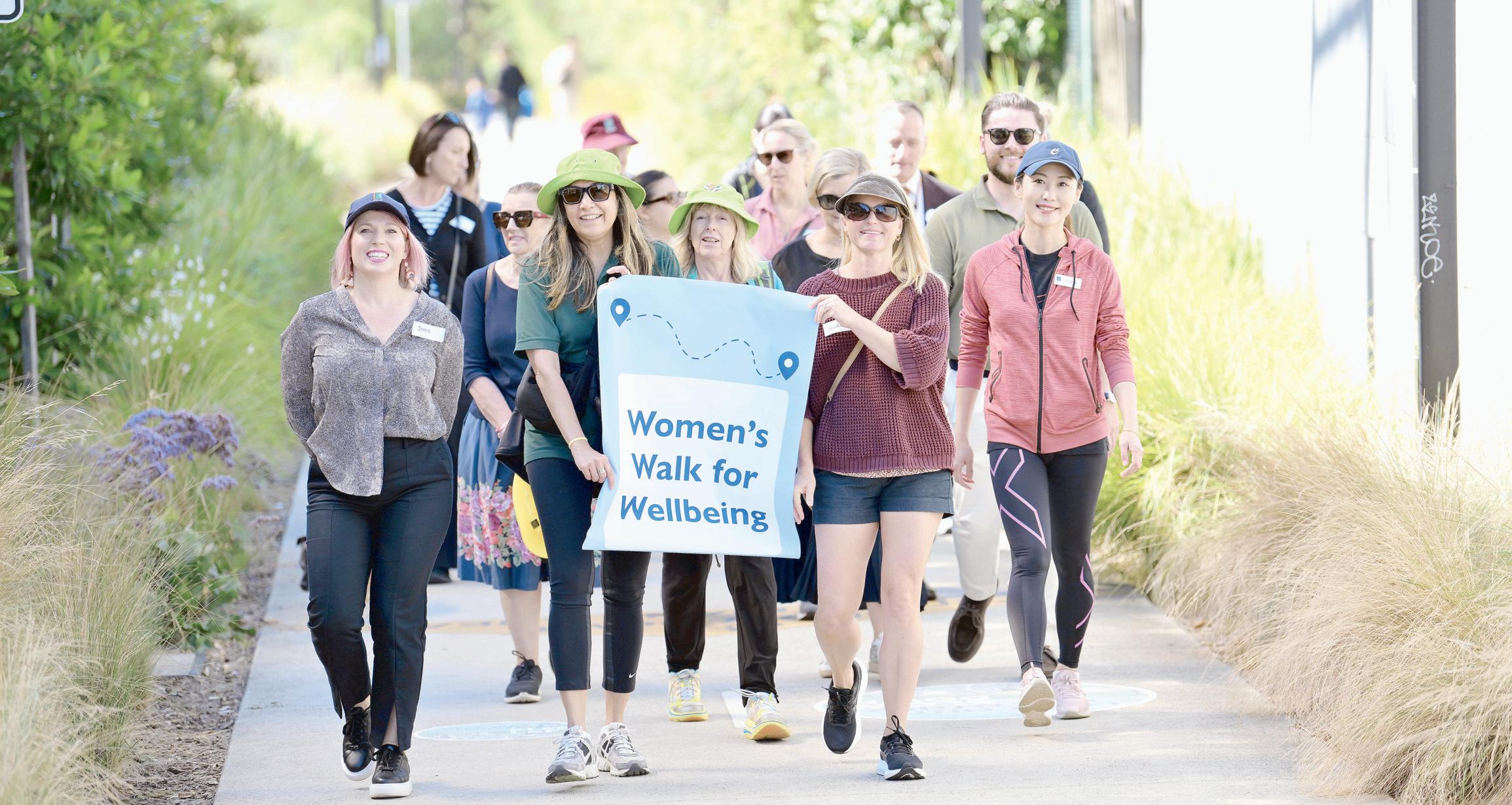
more accessible. We help form partnerships and lead solutions, not just talk about problems.”
The programs councils support, partner with, connect people to or deliver themselves have a significant impact on quality of life in lo-

cal communities.
The mayors believe more people should know about and access valued local services like libraries, parks and recreation, maternal child health, community grants, diversity and inclusion programs, and local events, all
of which continue to play a significant role in keeping communities connected in challenging times.
The mayors walked from Galbally Reserve Playground in the City of Monash to Murrumbeena Park in the City of Glen Eira.



